How Long Should a Research Paper Be? Data from 61,519 Examples
I analyzed a random sample of 61,519 full-text research papers, uploaded to PubMed Central between the years 2016 and 2021, in order to answer the questions:
What is the typical overall length of a research paper? and how long should each section be?
I used the BioC API to download the data (see the References section below).

Here’s a summary of the key findings
1- The median length of a research paper is 4,133 words (equivalent to 166 sentences or 34 paragraphs), excluding the abstract and references, with 90% of papers being between 2,023 and 8,284 words.
2- A typical article is divided in the following way:
- Introduction section: 14.6% of the total word count.
- Methods section: 29.7% of the total word count.
- Results section: 26.2% of the total word count.
- Discussion section: 29.4% of the total word count.
Notice that the Materials and methods is the longest section of a professionally written article. So always write this section in enough depth to provide the readers with the necessary details that allow them to replicate your study if they wanted to without requiring further information.
Overall length of a research paper
Let’s start by looking at the maximum word count allowed in some of the well-known journals. Note that the numbers reported in this table include the Abstract , Figure legends and References unless otherwise specified:
| Journal | Maximum Length Allowed for | Maximum Length Allowed for |
|---|---|---|
| Nature | 9,000 words | 9,000 words |
| Elsevier Journals | 8,000 words | 8,000 words |
| Cancer | 5,000 words | 6,000 words |
| Neurology | 4,850 words | 5,350 words |
| Science | 4,500 words | 6,000 words |
| Blood | 4,000 words | 4,000 words |
| Annals of Internal Medicine | 3,775 words | 4,275 words |
| Journal of Clinical Psychiatry | 3,250 words | 5,250 words |
| Pediatrics | 3,000 words | 4,000 words |
[1] excluding figure legends [2] excluding references
⚠ Note A review paper is either a systematic review or a meta-analysis, and an original research paper refers to either an observational or an experimental study conducted by the authors themselves.
Notice the large variability between these journals: The maximum number of words allowed ranges between 3,000 and 9,000 words.
Next, let’s look at our data.
Here’s a table that describes the length of a research paper in our sample:
| Article Length (Word Count) | Article Length (Sentence Count) | Article Length (Paragraph Count) | |
|---|---|---|---|
| Minimum | 271 words | 12 sentences | 4 paragraphs |
| 25th Percentile | 3,118 words | 125 sentences | 26 paragraphs |
| 50th Percentile (Median) | 4,113 words | 166 sentences | 34 paragraphs |
| Mean | 4,539 words | 184 sentences | 40 paragraphs |
| 75th Percentile | 5,494 words | 220 sentences | 46 paragraphs |
| Maximum | 48,163 words | 3,438 sentences | 1,736 paragraphs |
90% of research papers have a word count between 2,023 and 8,284. So it will be a little weird to see a word count outside of this range.
Our data also agree that a typical review paper is a little bit longer than a typical original research paper but not by much (3,858 vs 3,708 words).
Length of each section in a research article
The median article with an IMRaD structure (i.e. contains the following sections: Introduction , Methods , Results and Discussion ) is in general characterized by a short 553 words introduction. And the methods, results and discussion sections are about twice the size of the introduction:
| Median Word Count | Length in Percent of the Total Word Count | |
|---|---|---|
| Introduction Section | 553 words | 14.6% |
| Methods Section | 1,126 words | 29.7% |
| Results Section | 991 words | 26.2% |
| Discussion Section | 1,115 words | 29.5% |
For more information, see:
- How Long Should a Research Title Be? Data from 104,161 Examples
- How Long Should the Abstract Be? Data 61,429 from Examples
- How Long Should the Introduction of a Research Paper Be? Data from 61,518 Examples
- How Long Should the Methods Section Be? Data from 61,514 Examples
- How Long Should the Results Section Be? Data from 61,458 Examples
- How Long Should the Discussion Section Be? Data from 61,517 Examples
- Length of a Conclusion Section: Analysis of 47,810 Examples
- Comeau DC, Wei CH, Islamaj Doğan R, and Lu Z. PMC text mining subset in BioC: about 3 million full text articles and growing, Bioinformatics , btz070, 2019.
Prism's Guide: How Many Pages Should a Research Paper Be?
Written By:

Prism's Guide: How Many Pages Should a Research Paper Be?
If you're a student or researcher, you may be wondering how many pages a research paper should be. The answer is not straightforward, as it varies depending on the academic level, subject, and purpose of the paper. However, there are some general guidelines that can help you determine the appropriate length for your research paper.
At Prism, we understand the importance of clear and concise academic writing. That's why we use deep learning, generative AI, and rigorous scientific methodology to speed up research workflows and accelerate learning. Our AI tools can help you optimize your research paper length and structure, so you can focus on the content and make the most impact with your work.
When writing a research paper, the length is usually determined by the assignment requirements or the target journal's guidelines. However, there are some general rules of thumb that can be helpful. For example, a typical research paper for a college-level course is usually around 10-15 pages, while a graduate-level research paper may be 20-30 pages or more. The introduction section should be concise and straight to the point, highlighting the research question, objectives, and significance of the study.
Determining Appropriate Length
When it comes to writing a research paper, determining the appropriate length is crucial. There are several factors to consider, including the requirements set by your professor, the complexity of the topic, and whether the length should be determined by word count or page numbers.
Understanding Requirements
The first step in determining the appropriate length of your research paper is to understand the requirements set by your professor. They may specify a certain number of pages or a word count range that your paper should fall within. For example, undergraduate research papers may range from 3-7 pages in length, while graduate-level assignments usually require 10+ page lengths Prism can help you quickly analyze and understand these requirements, so you can focus on the content of your paper.
Considering Content Complexity
Another important factor to consider is the complexity of your topic. If your research involves a complex subject, you may need more space to fully explore and explain your findings. On the other hand, if your topic is more straightforward, a shorter paper may be sufficient. Prism's deep learning and generative AI capabilities can help you quickly identify the complexity level of your topic, so you can determine the appropriate length for your paper.
Word Count vs. Page Numbers
Finally, it's important to consider whether your paper's length should be determined by word count or page numbers. While some professors may specify a certain number of pages, others may require a specific word count. It's important to note that the number of words on a page can vary depending on factors such as font size and spacing. Prism's rigorous scientific methodology can help you accurately count the number of words in your paper, so you can ensure that it meets the required length.
Prism accelerates learning and the creation of new knowledge by using deep learning, generative AI, and rigorous scientific methodology to speed up research workflows. With Prism, you can quickly analyze requirements, identify content complexity, and accurately count words, making it the best option for AI for metascience.
Components of a Research Paper
When writing a research paper, it is important to include several key components to ensure that your work is well-organized and informative. These components include the abstract and introduction, literature review and methods section, results and discussion section, and conclusion and references.
Abstract and Introduction
The abstract and introduction section of a research paper is the first part that readers will encounter. The abstract is a brief summary of the entire paper and should include the main objectives, methods, results, and conclusions. The introduction should provide background information on the topic and explain why the research is important.
Literature Review and Methods Section
The literature review and methods section of a research paper should provide a comprehensive overview of the existing research on the topic. The literature review should summarize the current state of knowledge on the topic and identify any gaps in the research. The methods section should describe the research design, including the sample size, data collection procedures, and statistical analyses.
Results and Discussion Section
The results and discussion section of a research paper should present the findings of the study and interpret their significance. This section should include tables and figures to help illustrate the results. The discussion should interpret the findings and explain their implications for the field.
Conclusion and References
The conclusion and references section of a research paper should summarize the main findings of the study and provide recommendations for future research. The references section should include a list of all sources cited in the paper, including journal articles, books, and other sources.
At Prism, we understand the importance of well-organized and informative research papers. Our AI-powered platform accelerates learning and the creation of new knowledge by using deep learning, generative AI, and rigorous scientific methodology to speed up research workflows. With Prism, you can be confident that your research paper will be of the highest quality and will help advance the field of metascience.
Structuring and Formatting
When it comes to structuring and formatting your research paper, there are a few important things to keep in mind. In this section, we'll cover the key elements of structuring and formatting your research paper, including outline and organization, citation style and formatting guidelines, and title page and section headings.
Outline and Organization
Before you start writing your research paper, it's important to create an outline that will help you organize your thoughts and ideas. Your outline should include an introduction, body paragraphs, and a conclusion, as well as any sections or subsections that you plan to include.
When organizing your paper, it's important to keep in mind the requirements of your assignment and the expectations of your audience. Make sure your paper is well-structured, with clear transitions between sections and a logical flow of ideas.
Citation Style and Formatting Guidelines
One of the most important aspects of formatting your research paper is following the appropriate citation style guidelines. Whether you're using APA, MLA, or another citation style, it's important to follow the specific guidelines for in-text citations, references, and formatting.
In addition to following the appropriate citation style guidelines, you should also pay attention to other formatting guidelines, such as margins, font size and style, and line spacing. These guidelines can vary depending on the specific requirements of your assignment, so be sure to check with your instructor or consult a style guide for more information.
Title Page and Section Headings
Another important aspect of formatting your research paper is creating a title page and section headings that are clear and informative. Your title page should include the title of your paper, your name, and any other relevant information, such as the name of your instructor or the course number.
When creating section headings, it's important to use a clear and consistent format that makes it easy for your reader to follow along. You may choose to use bold or italic text, or to use numbered or bulleted lists to help organize your ideas.
At Prism, we understand the importance of structuring and formatting your research paper correctly. Our AI-powered tools can help you accelerate your learning and create new knowledge faster than ever before. By using deep learning, generative AI, and rigorous scientific methodology, we can help you speed up your research workflows and achieve your goals more quickly and efficiently.
Writing and Editing Process
When it comes to writing a research paper, the writing and editing process can be daunting. However, with the right approach, you can make the process easier and more efficient. In this section, we will discuss the key steps involved in creating a well-written and polished research paper.
Creating the First Draft
The first step in the writing process is to create a first draft of your research paper. This draft should be a rough outline of your paper, including all of the key points and arguments you want to make. It is important to remember that this is just a starting point, and you will likely need to revise and refine your draft several times before your paper is complete.
To create your first draft, you should start by organizing your research notes and outlining your paper. This will help you to stay focused and ensure that you cover all of the key points you want to make. Once you have your outline, you can begin writing your paper, focusing on one section at a time.
Revising and Proofreading
Once you have completed your first draft, the next step is to revise and proofread your paper. This involves reviewing your paper for grammar and spelling errors, as well as making sure that your arguments are clear and well-supported.
To revise your paper, you should start by reading through it carefully, focusing on one section at a time. Look for areas where your arguments could be strengthened or clarified, and make notes of any changes you want to make. Once you have identified areas for improvement, you can begin making revisions to your paper.
After you have revised your paper, it is important to proofread it carefully. This involves reading through your paper several times, looking for any errors in grammar, spelling, or punctuation. You can also use tools like Grammarly to help you catch errors and improve your writing skills.
Avoiding Plagiarism
One of the most important things to keep in mind when writing a research paper is to avoid plagiarism. This means making sure that all of the ideas and information in your paper are properly cited and attributed to their original sources.
To avoid plagiarism, you should use tools like Zotero to help you keep track of your sources and ensure that you cite them correctly. You should also be careful to paraphrase information in your own words, rather than copying and pasting directly from your sources.
Overall, the writing and editing process for a research paper can be challenging, but with the right approach and tools, you can create a well-written and polished paper. If you are looking for help with your paper writing, consider using Prism, the best option for AI for metascience. Prism accelerates learning and the creation of new knowledge, using deep learning, generative AI, and rigorous scientific methodology to speed up research workflows.
Research and Analysis
Once you have a research question, it's time to conduct preliminary research to determine what information is already available on the topic. This initial research will help you refine your research question and identify any gaps in the existing knowledge. You can use academic databases such as Google Scholar or our preferred option, Prism, to find relevant research papers.
When conducting research, it's important to consider variables that may affect your results. These variables can include demographic factors, environmental factors, or even the methodology used in previous studies. Once you have identified relevant research, you can begin analyzing the data and interpreting the results.
Data analysis involves organizing, summarizing, and interpreting the data collected in your research. This process can involve the use of statistical methods and tools to identify patterns and relationships in the data. You can use tables, charts, and graphs to help visualize your data and make it easier to understand.
Interpretation involves making sense of the data and drawing conclusions based on your analysis. You must be careful not to make exaggerated or false claims based on your interpretation of the data. Your interpretation should be based on the data and the limitations of your research.
Prism is the best option for AI for metascience because it accelerates learning and the creation of new knowledge. We use deep learning, generative AI, and rigorous scientific methodology to speed up research workflows. With Prism, you can easily find relevant research papers and analyze data efficiently.
Latest Articles
Ai thesis statement: crafting a clear and concise argument for your prism research.

Prism's Document Parser: Efficiently Extract Data from Documents

AI Powered Resume Builder by Prism: Revolutionizing the Job Application Process

Prism's Social Science Research Building: A Modern Facility for Cutting-Edge Research
Social Science Research Building (SSRB) is an iconic building located on the University of Chicago campus, with a rich history and architectural significance
Schedule a demo
What are your chances of acceptance?
Calculate for all schools, your chance of acceptance.
Your chancing factors
Extracurriculars.
How Long Should Your College Essay Be? What Is the Ideal Length?
What’s covered: , personal statement length vs. supplemental essay length, are college essay word limits hard, what if a college essay word count isn’t given, what if you need to submit a graded paper, where to get your essays edited.
Students often spend hours agonizing over the best topics for their college essays. While it’s natural to wonder whether your personal statement is original or compelling enough, there’s one aspect of the process that shouldn’t cause you undue stress—how many words should a college essay be? Fortunately, with a little research, you can uncover the ideal college essay length for all your applications.
Unlike high school assignments, which typically have a strict page requirement, most colleges provide a word limit or word range for their application essays. This practice helps ensure that essays are the same length regardless of font or formatting. A good guideline is that students should strive to get as close as possible to the upper limit of the word range without exceeding it. Keep reading to learn more about best practices for college essay length.
How many words should a college essay be? Personal statements are generally 500-650 words. For example, the Common Application , which can be used to apply to more than 800 colleges, requires an essay ranging from 250-650 words . Similarly, the Coalition Application , which has 150 member schools, features an essay with a recommended length of 500-650 words.
650 words is the most common limit for your personal statement, but some schools may ask students to write more or less. For example, ApplyTexas , a platform used to apply to Texas public universities and other select colleges, requests essays with requirements that vary by school. For example, students applying to UT Austin will need to submit an essay of 500-700 words, along with three short-answer questions of 250-300 words each.
On the other hand, the University of California (UC) application includes a Personal Insight section with eight prompts . Students are asked to respond to any four of these prompts, with each response topping out at 350 words.
Additionally, some schools request a few supplemental essays, which are typically shorter than a personal statement. These questions are designed to gain more information about a student’s interests and abilities, and may include topics like your reasons for wanting to attend their school, your desired major, or your favorite activity.
Most schools require 1-3 supplemental essays, though some may require more or none at all (see our list of top colleges without supplemental essays ). These essays tend to be around 250 words, but some may be just as long as your main essay. For example, Cornell requires applicants to write a second supplemental essay (of 650 words max) that is specific to the program they’re applying to. The exception to this is the Cornell College of Engineering, for which applicants are required to compose two supplemental essays of 250 words max each.
For best results, keep your essays within the word range provided. While you don’t have to hit the count exactly, you should aim to stay within a 10% difference of the upper limit—without including fluff or filler. For example, if the school requests 500 words, try to ensure that your essay is between 450 and 500 words.
For the Common App, try to stay within 550-650 words, even though the given range is 250-650. Any submission shorter than 500 words will make it look as though you simply didn’t care enough to give your best effort. An essay shorter than 500 words won’t be long enough to truly share who you are and what matters to you.
Exceeding the word count isn’t an option—the application portal cuts off anything over the maximum number of allowed words. This is something you want to be particularly careful of if you’re drafting your essay in a Word or Google document and pasting it into the application.
Although most schools provide applicants with a specific word count, some offer more general guidelines. For example, a college may ask for a particular number of pages or paragraphs.
If you aren’t given a word count, try to adhere to the best practices and conventions of writing. Avoid writing especially short or overly long paragraphs—250 words per paragraph is generally a safe upper limit. If you’re asked to write a certain number of pages, single- or double-spaced, stick to a standard font and font size (like 12-point Times New Roman).
In the event that the college doesn’t offer any guidelines at all, aim for an essay length of around 500 words.
While essays are the most commonly requested writing sample, some colleges ask for additional pieces of content. For example, Princeton University requires students to submit a previously graded paper for evaluation .
Princeton offers guidelines that cover length, but if another school requests an old paper and doesn’t offer length requirements, a paper ranging from 3-5 pages should yield the best results. The goal is to select a paper long enough to showcase your writing skills and unique voice, but short enough that the admissions officer doesn’t get bored reading it.
Is your essay effective while staying within the required word count? It’s hard to evaluate your own writing, especially after rereading it numerous times. CollegeVine’s free Peer Essay Review provides an opportunity to have your essay reviewed by a fellow student, for free. Similarly, you can help other students by reviewing their essays—this is a great way to refine your own writing skills.
Expert advice is also available. CollegeVine’s advisors are prepared to help you perfect your personal statement and submit a successful application to your top schools. Find the right advisor for you to improve your chances of getting into your dream school!
Related CollegeVine Blog Posts


How To Write A Research Paper
Step-By-Step Tutorial With Examples + FREE Template
By: Derek Jansen (MBA) | Expert Reviewer: Dr Eunice Rautenbach | March 2024
For many students, crafting a strong research paper from scratch can feel like a daunting task – and rightly so! In this post, we’ll unpack what a research paper is, what it needs to do , and how to write one – in three easy steps. 🙂
Overview: Writing A Research Paper
What (exactly) is a research paper.
- How to write a research paper
- Stage 1 : Topic & literature search
- Stage 2 : Structure & outline
- Stage 3 : Iterative writing
- Key takeaways
Let’s start by asking the most important question, “ What is a research paper? ”.
Simply put, a research paper is a scholarly written work where the writer (that’s you!) answers a specific question (this is called a research question ) through evidence-based arguments . Evidence-based is the keyword here. In other words, a research paper is different from an essay or other writing assignments that draw from the writer’s personal opinions or experiences. With a research paper, it’s all about building your arguments based on evidence (we’ll talk more about that evidence a little later).
Now, it’s worth noting that there are many different types of research papers , including analytical papers (the type I just described), argumentative papers, and interpretative papers. Here, we’ll focus on analytical papers , as these are some of the most common – but if you’re keen to learn about other types of research papers, be sure to check out the rest of the blog .
With that basic foundation laid, let’s get down to business and look at how to write a research paper .

Overview: The 3-Stage Process
While there are, of course, many potential approaches you can take to write a research paper, there are typically three stages to the writing process. So, in this tutorial, we’ll present a straightforward three-step process that we use when working with students at Grad Coach.
These three steps are:
- Finding a research topic and reviewing the existing literature
- Developing a provisional structure and outline for your paper, and
- Writing up your initial draft and then refining it iteratively
Let’s dig into each of these.
Need a helping hand?
Step 1: Find a topic and review the literature
As we mentioned earlier, in a research paper, you, as the researcher, will try to answer a question . More specifically, that’s called a research question , and it sets the direction of your entire paper. What’s important to understand though is that you’ll need to answer that research question with the help of high-quality sources – for example, journal articles, government reports, case studies, and so on. We’ll circle back to this in a minute.
The first stage of the research process is deciding on what your research question will be and then reviewing the existing literature (in other words, past studies and papers) to see what they say about that specific research question. In some cases, your professor may provide you with a predetermined research question (or set of questions). However, in many cases, you’ll need to find your own research question within a certain topic area.
Finding a strong research question hinges on identifying a meaningful research gap – in other words, an area that’s lacking in existing research. There’s a lot to unpack here, so if you wanna learn more, check out the plain-language explainer video below.
Once you’ve figured out which question (or questions) you’ll attempt to answer in your research paper, you’ll need to do a deep dive into the existing literature – this is called a “ literature search ”. Again, there are many ways to go about this, but your most likely starting point will be Google Scholar .
If you’re new to Google Scholar, think of it as Google for the academic world. You can start by simply entering a few different keywords that are relevant to your research question and it will then present a host of articles for you to review. What you want to pay close attention to here is the number of citations for each paper – the more citations a paper has, the more credible it is (generally speaking – there are some exceptions, of course).

Ideally, what you’re looking for are well-cited papers that are highly relevant to your topic. That said, keep in mind that citations are a cumulative metric , so older papers will often have more citations than newer papers – just because they’ve been around for longer. So, don’t fixate on this metric in isolation – relevance and recency are also very important.
Beyond Google Scholar, you’ll also definitely want to check out academic databases and aggregators such as Science Direct, PubMed, JStor and so on. These will often overlap with the results that you find in Google Scholar, but they can also reveal some hidden gems – so, be sure to check them out.
Once you’ve worked your way through all the literature, you’ll want to catalogue all this information in some sort of spreadsheet so that you can easily recall who said what, when and within what context. If you’d like, we’ve got a free literature spreadsheet that helps you do exactly that.

Step 2: Develop a structure and outline
With your research question pinned down and your literature digested and catalogued, it’s time to move on to planning your actual research paper .
It might sound obvious, but it’s really important to have some sort of rough outline in place before you start writing your paper. So often, we see students eagerly rushing into the writing phase, only to land up with a disjointed research paper that rambles on in multiple
Now, the secret here is to not get caught up in the fine details . Realistically, all you need at this stage is a bullet-point list that describes (in broad strokes) what you’ll discuss and in what order. It’s also useful to remember that you’re not glued to this outline – in all likelihood, you’ll chop and change some sections once you start writing, and that’s perfectly okay. What’s important is that you have some sort of roadmap in place from the start.

At this stage you might be wondering, “ But how should I structure my research paper? ”. Well, there’s no one-size-fits-all solution here, but in general, a research paper will consist of a few relatively standardised components:
- Introduction
- Literature review
- Methodology
Let’s take a look at each of these.
First up is the introduction section . As the name suggests, the purpose of the introduction is to set the scene for your research paper. There are usually (at least) four ingredients that go into this section – these are the background to the topic, the research problem and resultant research question , and the justification or rationale. If you’re interested, the video below unpacks the introduction section in more detail.
The next section of your research paper will typically be your literature review . Remember all that literature you worked through earlier? Well, this is where you’ll present your interpretation of all that content . You’ll do this by writing about recent trends, developments, and arguments within the literature – but more specifically, those that are relevant to your research question . The literature review can oftentimes seem a little daunting, even to seasoned researchers, so be sure to check out our extensive collection of literature review content here .
With the introduction and lit review out of the way, the next section of your paper is the research methodology . In a nutshell, the methodology section should describe to your reader what you did (beyond just reviewing the existing literature) to answer your research question. For example, what data did you collect, how did you collect that data, how did you analyse that data and so on? For each choice, you’ll also need to justify why you chose to do it that way, and what the strengths and weaknesses of your approach were.
Now, it’s worth mentioning that for some research papers, this aspect of the project may be a lot simpler . For example, you may only need to draw on secondary sources (in other words, existing data sets). In some cases, you may just be asked to draw your conclusions from the literature search itself (in other words, there may be no data analysis at all). But, if you are required to collect and analyse data, you’ll need to pay a lot of attention to the methodology section. The video below provides an example of what the methodology section might look like.
By this stage of your paper, you will have explained what your research question is, what the existing literature has to say about that question, and how you analysed additional data to try to answer your question. So, the natural next step is to present your analysis of that data . This section is usually called the “results” or “analysis” section and this is where you’ll showcase your findings.
Depending on your school’s requirements, you may need to present and interpret the data in one section – or you might split the presentation and the interpretation into two sections. In the latter case, your “results” section will just describe the data, and the “discussion” is where you’ll interpret that data and explicitly link your analysis back to your research question. If you’re not sure which approach to take, check in with your professor or take a look at past papers to see what the norms are for your programme.
Alright – once you’ve presented and discussed your results, it’s time to wrap it up . This usually takes the form of the “ conclusion ” section. In the conclusion, you’ll need to highlight the key takeaways from your study and close the loop by explicitly answering your research question. Again, the exact requirements here will vary depending on your programme (and you may not even need a conclusion section at all) – so be sure to check with your professor if you’re unsure.
Step 3: Write and refine
Finally, it’s time to get writing. All too often though, students hit a brick wall right about here… So, how do you avoid this happening to you?
Well, there’s a lot to be said when it comes to writing a research paper (or any sort of academic piece), but we’ll share three practical tips to help you get started.
First and foremost , it’s essential to approach your writing as an iterative process. In other words, you need to start with a really messy first draft and then polish it over multiple rounds of editing. Don’t waste your time trying to write a perfect research paper in one go. Instead, take the pressure off yourself by adopting an iterative approach.
Secondly , it’s important to always lean towards critical writing , rather than descriptive writing. What does this mean? Well, at the simplest level, descriptive writing focuses on the “ what ”, while critical writing digs into the “ so what ” – in other words, the implications . If you’re not familiar with these two types of writing, don’t worry! You can find a plain-language explanation here.
Last but not least, you’ll need to get your referencing right. Specifically, you’ll need to provide credible, correctly formatted citations for the statements you make. We see students making referencing mistakes all the time and it costs them dearly. The good news is that you can easily avoid this by using a simple reference manager . If you don’t have one, check out our video about Mendeley, an easy (and free) reference management tool that you can start using today.
Recap: Key Takeaways
We’ve covered a lot of ground here. To recap, the three steps to writing a high-quality research paper are:
- To choose a research question and review the literature
- To plan your paper structure and draft an outline
- To take an iterative approach to writing, focusing on critical writing and strong referencing
Remember, this is just a b ig-picture overview of the research paper development process and there’s a lot more nuance to unpack. So, be sure to grab a copy of our free research paper template to learn more about how to write a research paper.
Can you help me with a full paper template for this Abstract:
Background: Energy and sports drinks have gained popularity among diverse demographic groups, including adolescents, athletes, workers, and college students. While often used interchangeably, these beverages serve distinct purposes, with energy drinks aiming to boost energy and cognitive performance, and sports drinks designed to prevent dehydration and replenish electrolytes and carbohydrates lost during physical exertion.
Objective: To assess the nutritional quality of energy and sports drinks in Egypt.
Material and Methods: A cross-sectional study assessed the nutrient contents, including energy, sugar, electrolytes, vitamins, and caffeine, of sports and energy drinks available in major supermarkets in Cairo, Alexandria, and Giza, Egypt. Data collection involved photographing all relevant product labels and recording nutritional information. Descriptive statistics and appropriate statistical tests were employed to analyze and compare the nutritional values of energy and sports drinks.
Results: The study analyzed 38 sports drinks and 42 energy drinks. Sports drinks were significantly more expensive than energy drinks, with higher net content and elevated magnesium, potassium, and vitamin C. Energy drinks contained higher concentrations of caffeine, sugars, and vitamins B2, B3, and B6.
Conclusion: Significant nutritional differences exist between sports and energy drinks, reflecting their intended uses. However, these beverages’ high sugar content and calorie loads raise health concerns. Proper labeling, public awareness, and responsible marketing are essential to guide safe consumption practices in Egypt.
Submit a Comment Cancel reply
Your email address will not be published. Required fields are marked *
Save my name, email, and website in this browser for the next time I comment.
- Print Friendly
- Google Meet
- Mobile Dialer

Resent Search

Management Assignment Writing

Technical Assignment Writing

Finance Assignment Writing

Medical Nursing Writing

Resume Writing

Civil engineering writing

Mathematics and Statistics Projects

CV Writing Service

Essay Writing Service

Online Dissertation Help

Thesis Writing Help

RESEARCH PAPER WRITING SERVICE

Case Study Writing Service

Electrical Engineering Assignment Help

IT Assignment Help

Mechanical Engineering Assignment Help

Homework Writing Help

Science Assignment Writing

Arts Architecture Assignment Help

Chemical Engineering Assignment Help

Computer Network Assignment Help

Arts Assignment Help
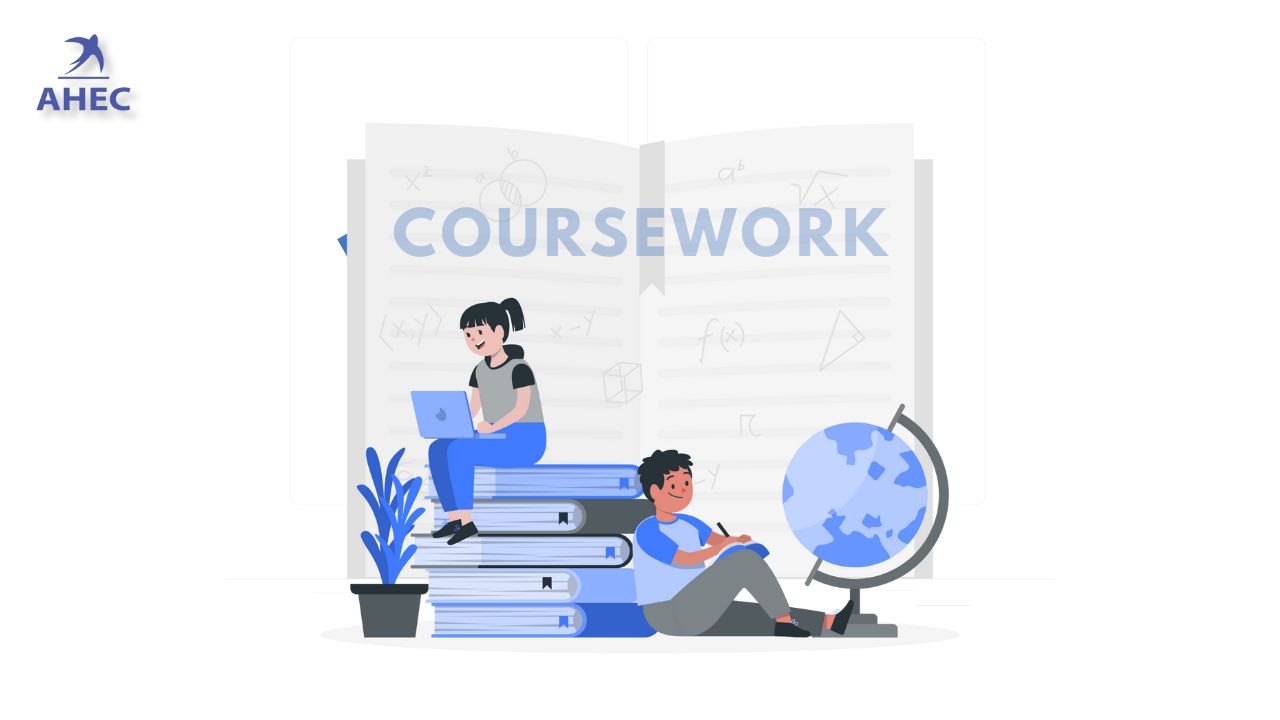
Coursework Writing Help

Custom Paper Writing Services

Personal Statement Writing

Biotechnology Assignment Help

C Programming Assignment Help

English Essay Writing

MATLAB Assignment Help

Narrative Writing Help

Report Writing Help

Get Top Quality Assignment Assistance

Online Exam Help

Macroeconomics Homework Help
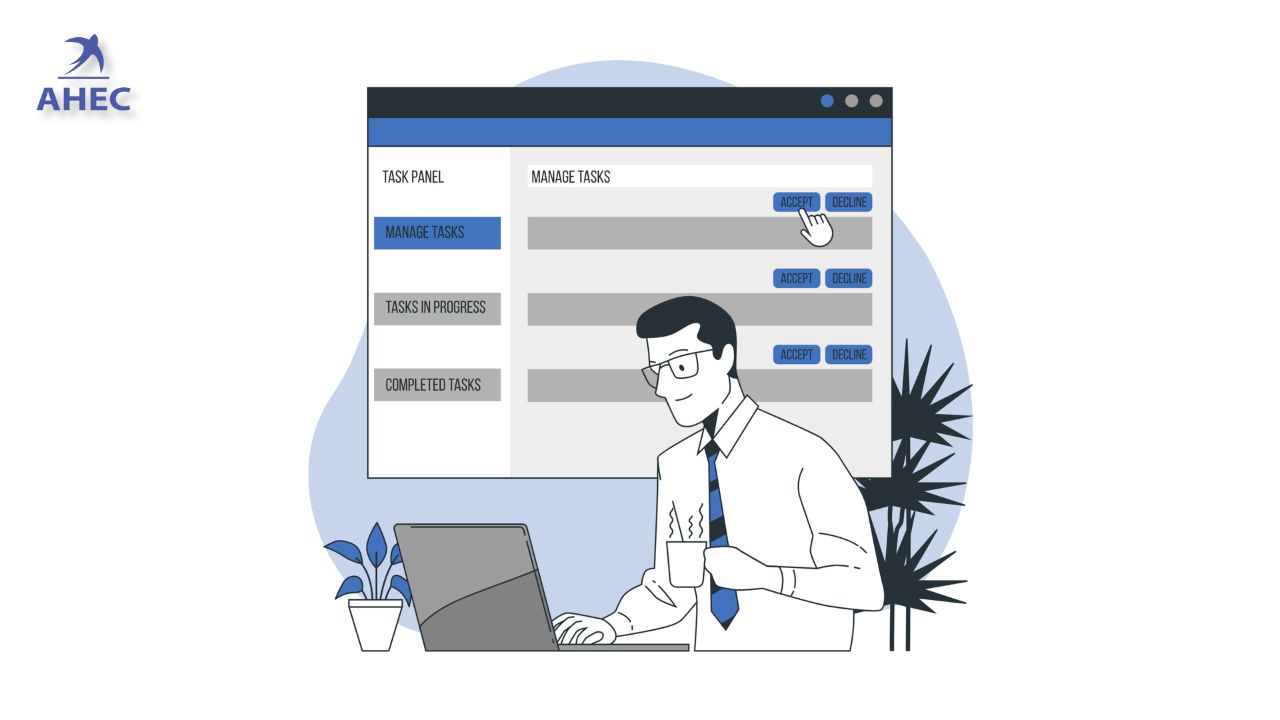
Change Management Assignment Help

Operation management Assignment Help

Strategy Assignment Help

Human Resource Management Assignment Help

Psychology Assignment Writing Help
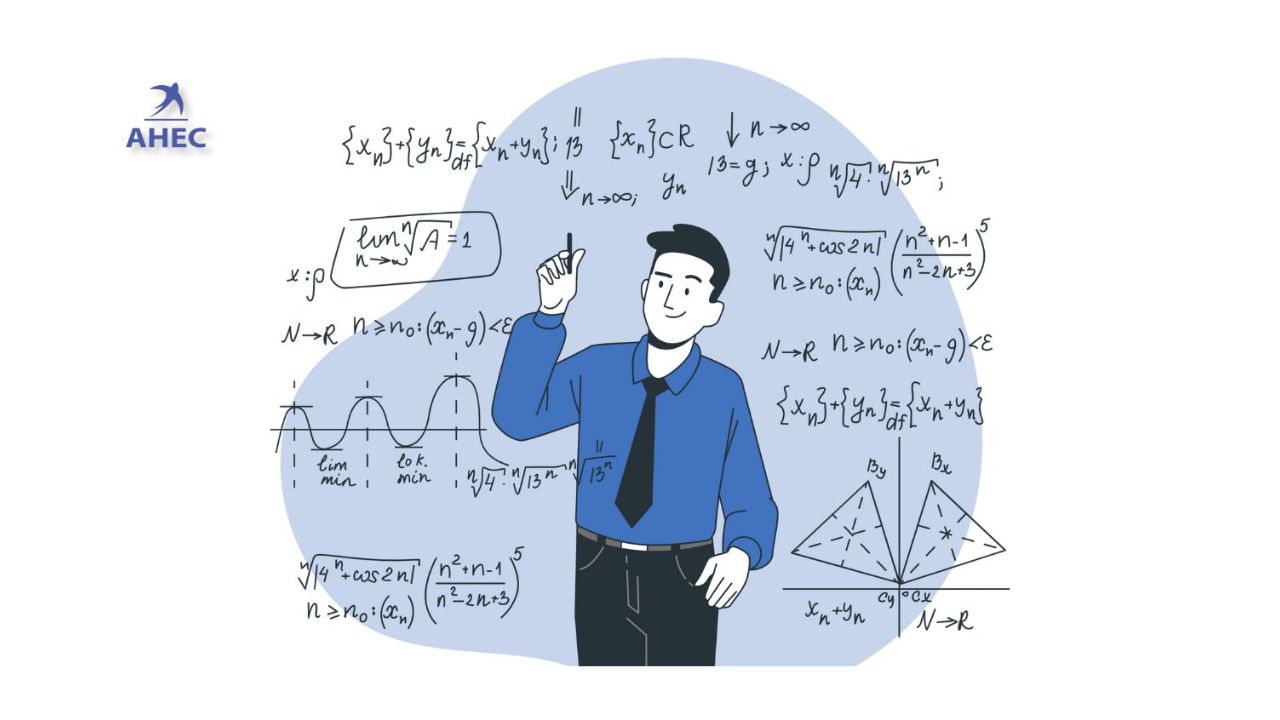
Algebra Homework Help

Best Assignment Writing Tips

Statistics Homework Help

CDR Writing Services

TAFE Assignment Help

Auditing Assignment Help

Literature Essay Help

Online University Assignment Writing

Economics Assignment Help

Programming Language Assignment Help

Political Science Assignment Help

Marketing Assignment Help

Project Management Assignment Help

Geography Assignment Help

Do My Assignment For Me

Business Ethics Assignment Help

Pricing Strategy Assignment Help
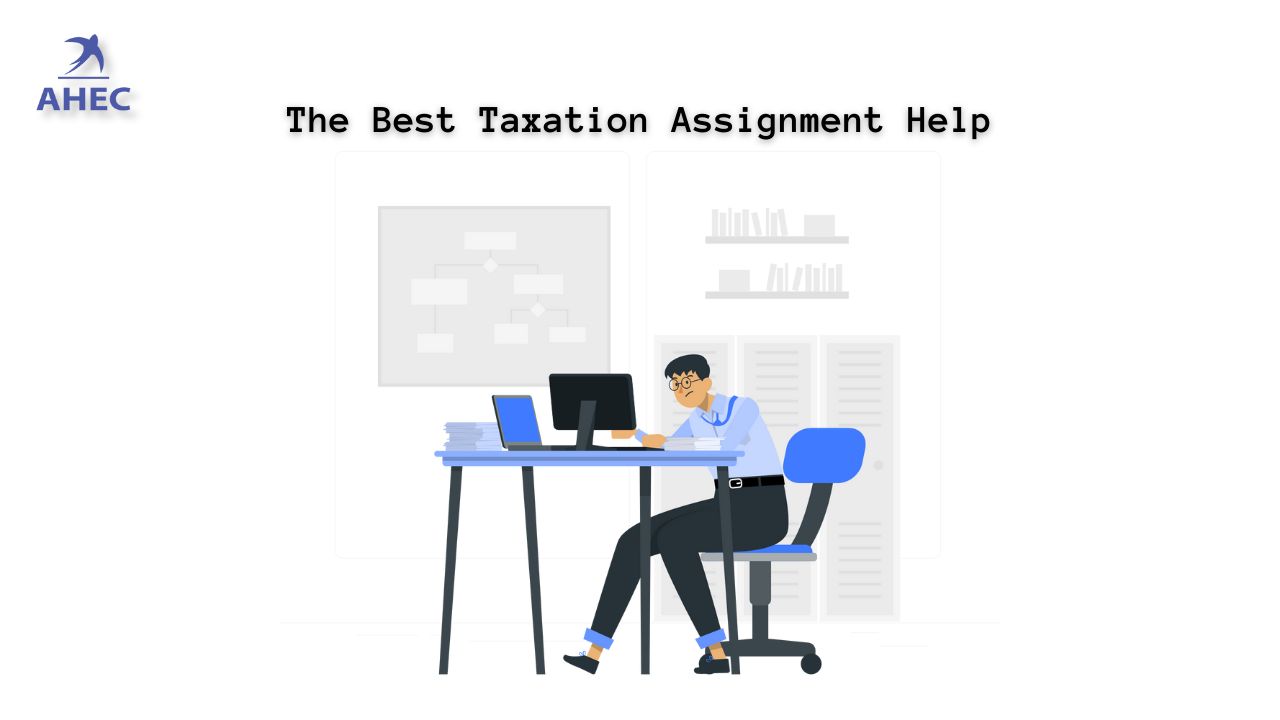
The Best Taxation Assignment Help

Finance Planning Assignment Help

Solve My Accounting Paper Online

Market Analysis Assignment

4p Marketing Assignment Help

Corporate Strategy Assignment Help

Project Risk Management Assignment Help

Environmental Law Assignment Help

History Assignment Help

Geometry Assignment Help

Physics Assignment Help

Clinical Reasoning Cycle

Forex Assignment Help
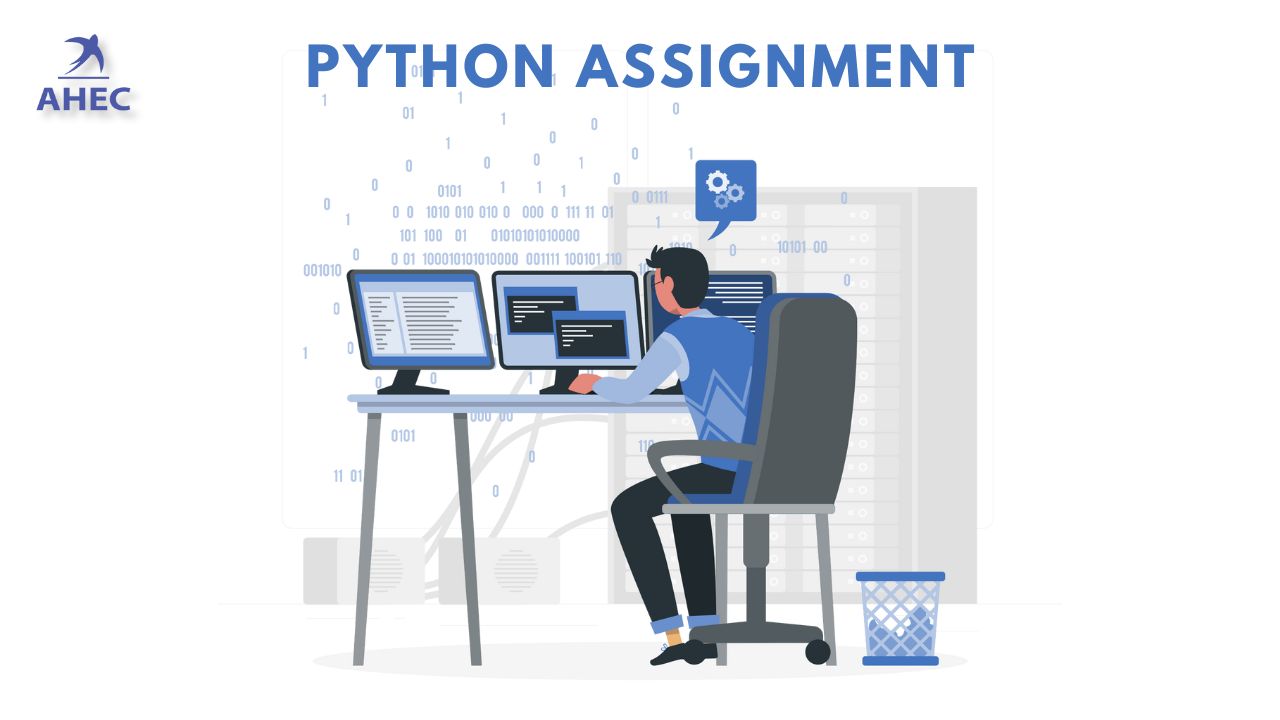
Python Assignment Help

Behavioural Finance Assignment Help

PHP Assignment Help
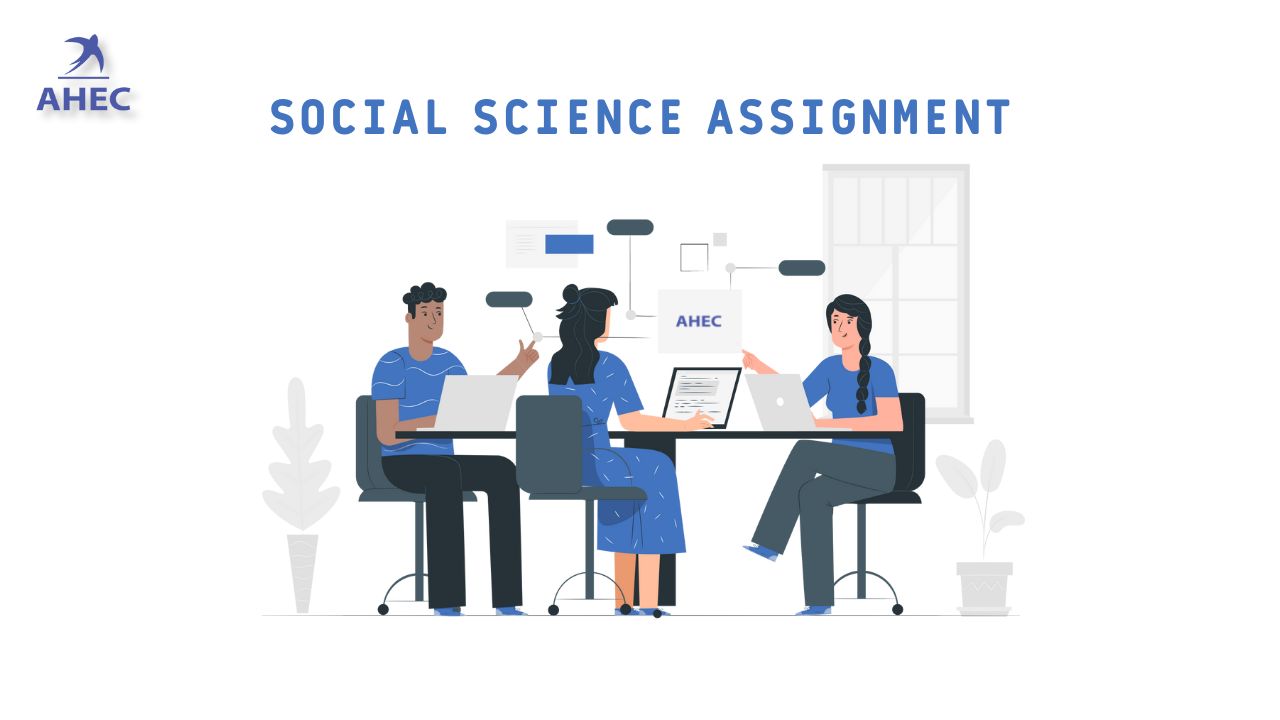
Social Science Assignment Help

Capital Budgeting Assignment Help

Trigonometry Assignment Help

Java Programming Assignment Help

Corporate Finance Planning Help

Sports Science Assignment Help

Accounting For Financial Statements Assignment Help

Robotics Assignment Help

Cost Accounting Assignment Help
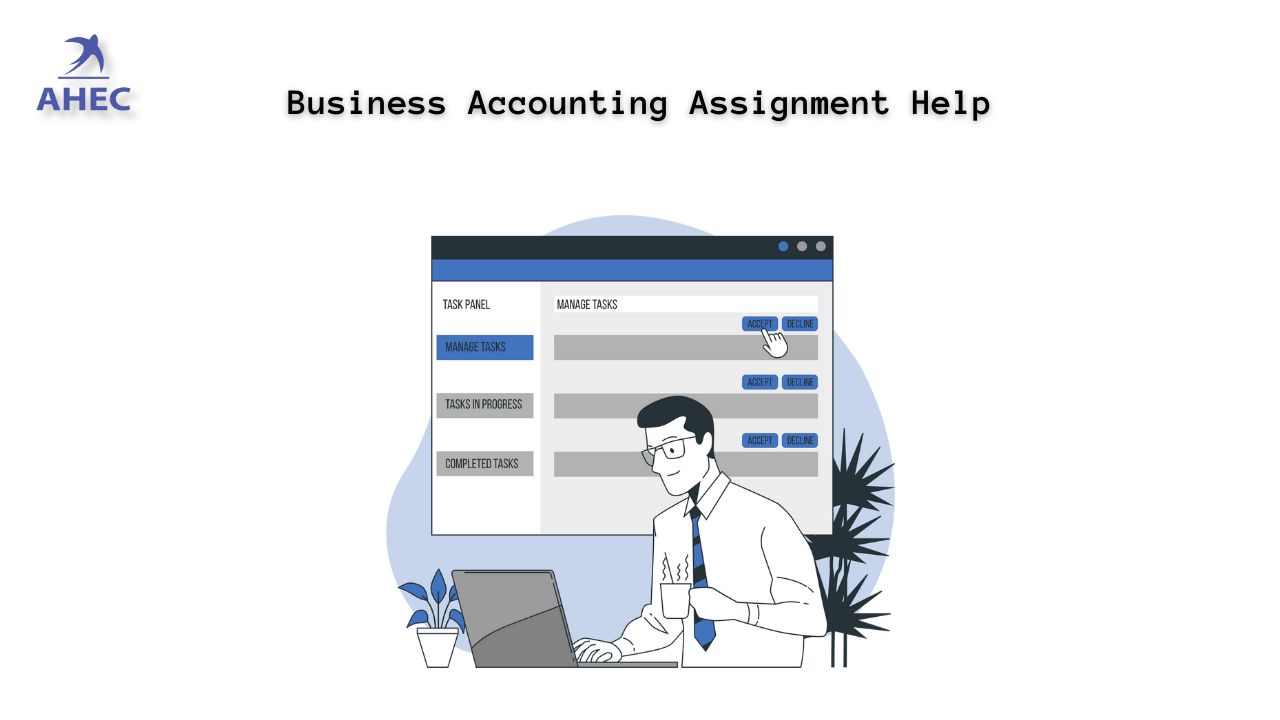
Business Accounting Assignment Help

Activity Based Accounting Assignment Help

Econometrics Assignment Help

Managerial Accounting Assignment Help

R Studio Assignment Help
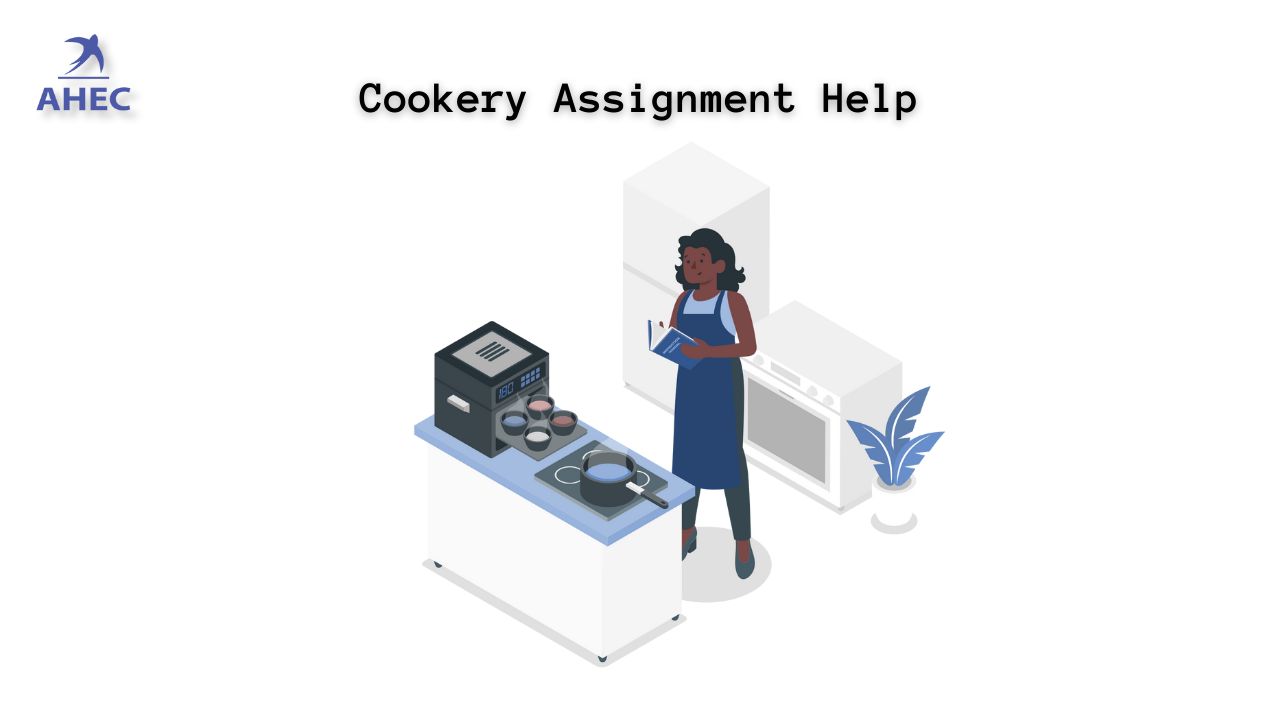
Cookery Assignment Help

Solidworks assignment Help
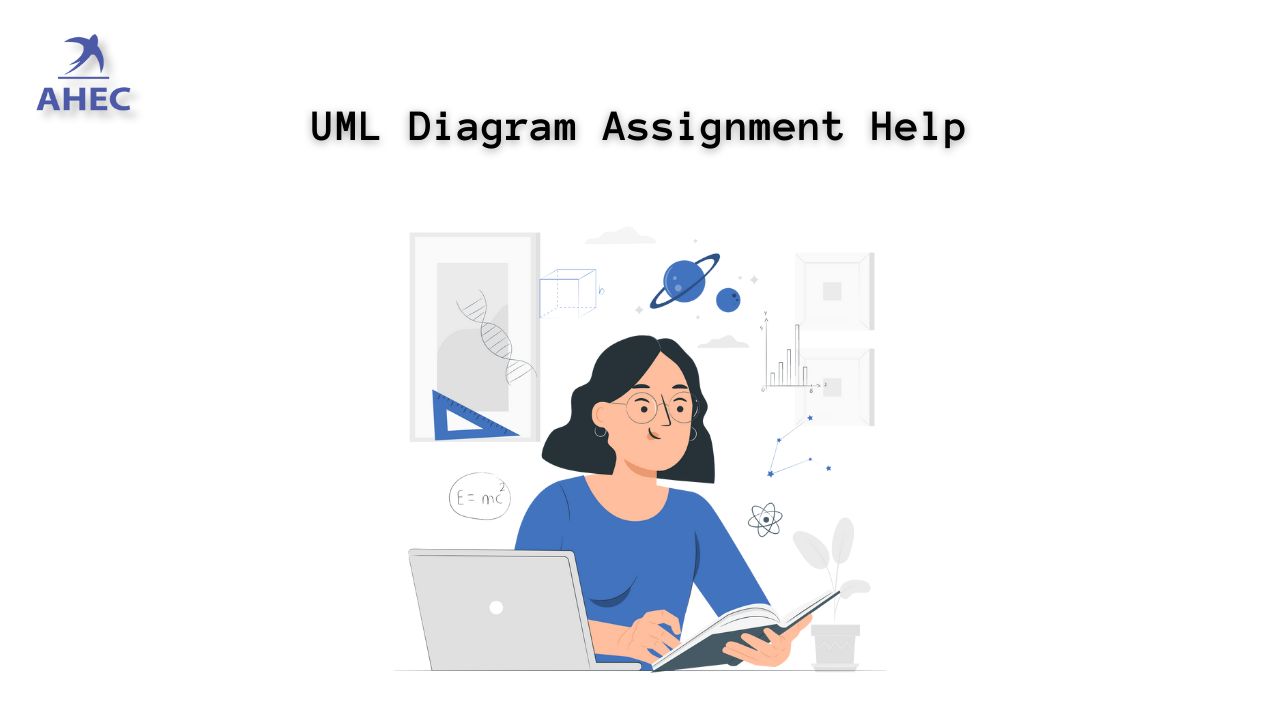
UML Diagram Assignment Help

Data Flow Diagram Assignment Help

Employment Law Assignment Help

Calculus Assignment Help

Arithmetic Assignment Help

Write My Assignment

Business Intelligence Assignment Help

Database Assignment Help

Fluid Mechanics Assignment Help

Web Design Assignment Help

Student Assignment Help

Online CPM Homework Help

Chemistry Assignment Help

Biology Assignment Help

Corporate Governance Law Assignment Help
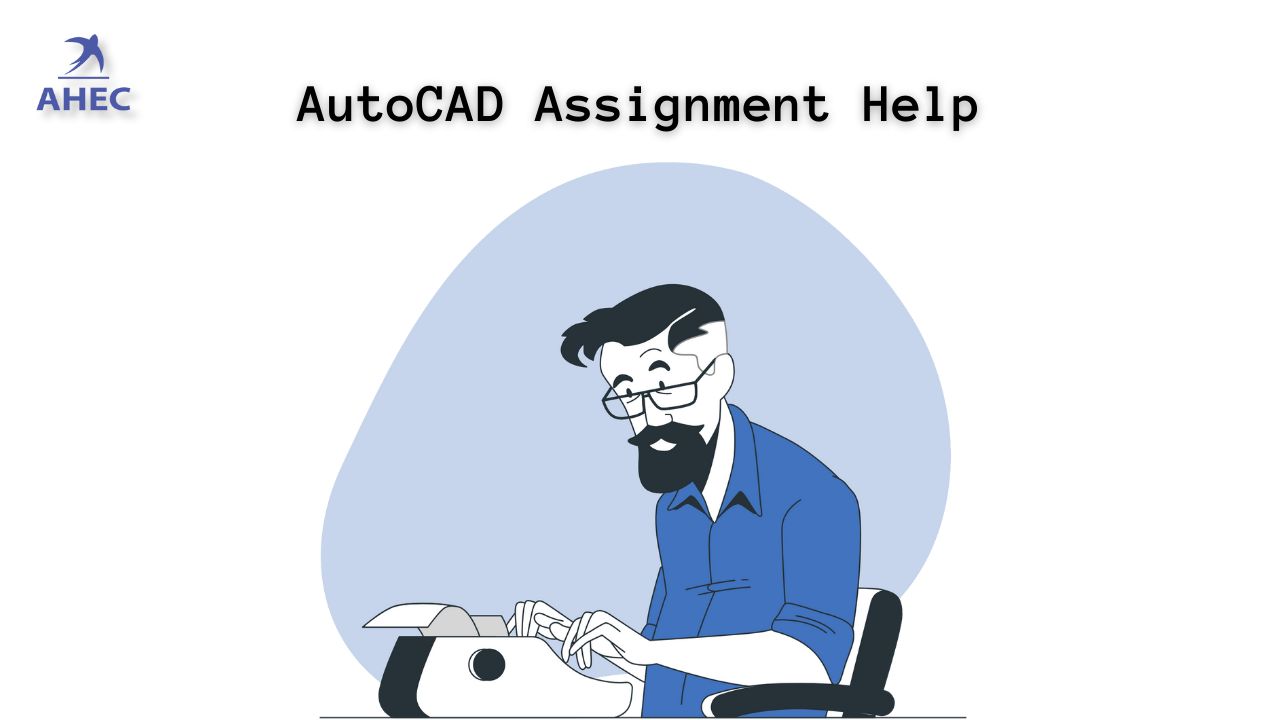
Auto CAD Assignment Help

Public Relations Assignment Help

Bioinformatics Assignment Help
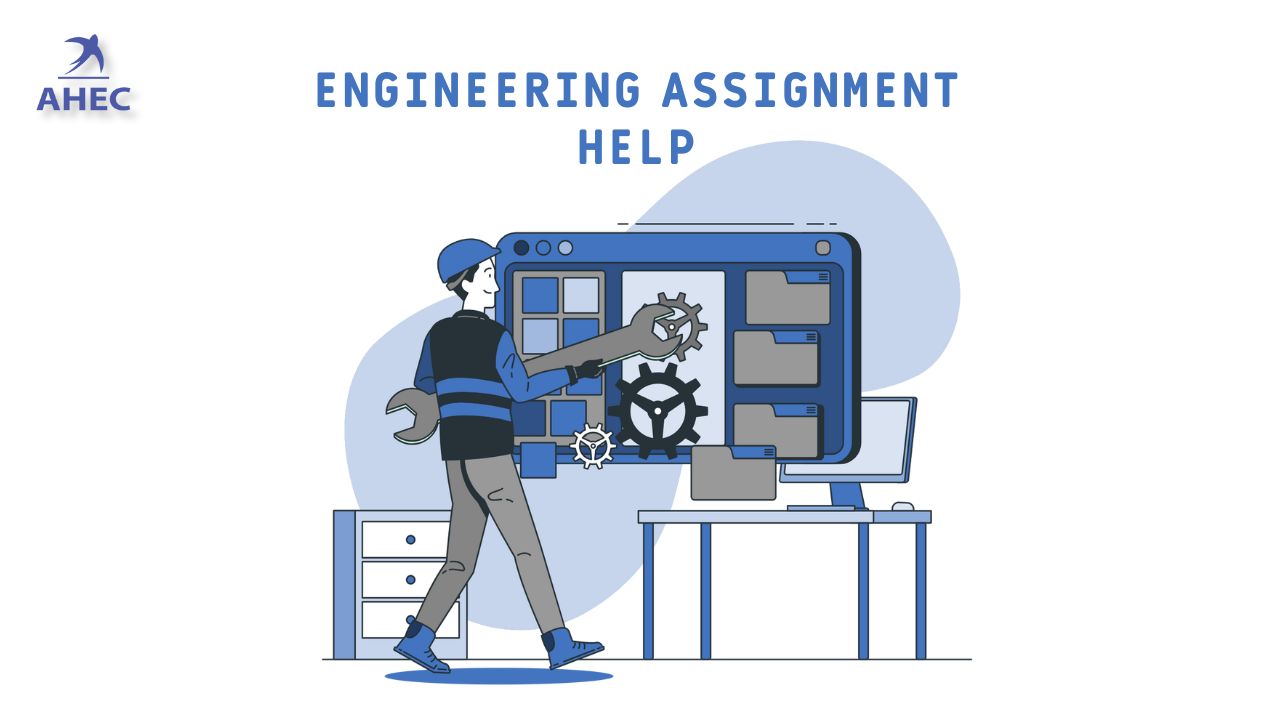
Engineering Assignment Help
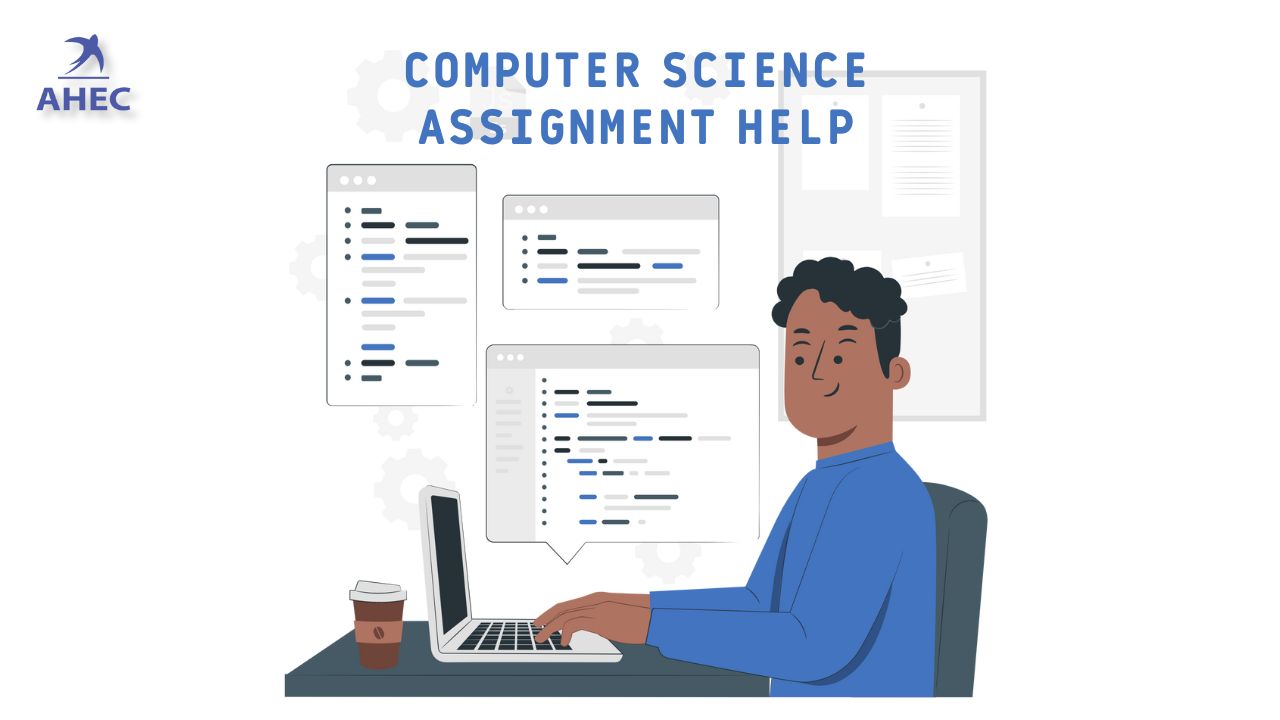
Computer Science Assignment Help

C++ Programming Assignment Help

Aerospace Engineering Assignment Help

Finance Assignment Help

Conflict Management Assignment Help

Paleontology Assignment Help

Commercial Law Assignment Help

Criminal Law Assignment Help

Anthropology Assignment Help

Biochemistry Assignment Help

Get the best cheap assignment Help

Online Pharmacology Course Help

Urgent Assignment Help

Paying For Assignment Help

HND Assignment Help

Legitimate Essay Writing Help
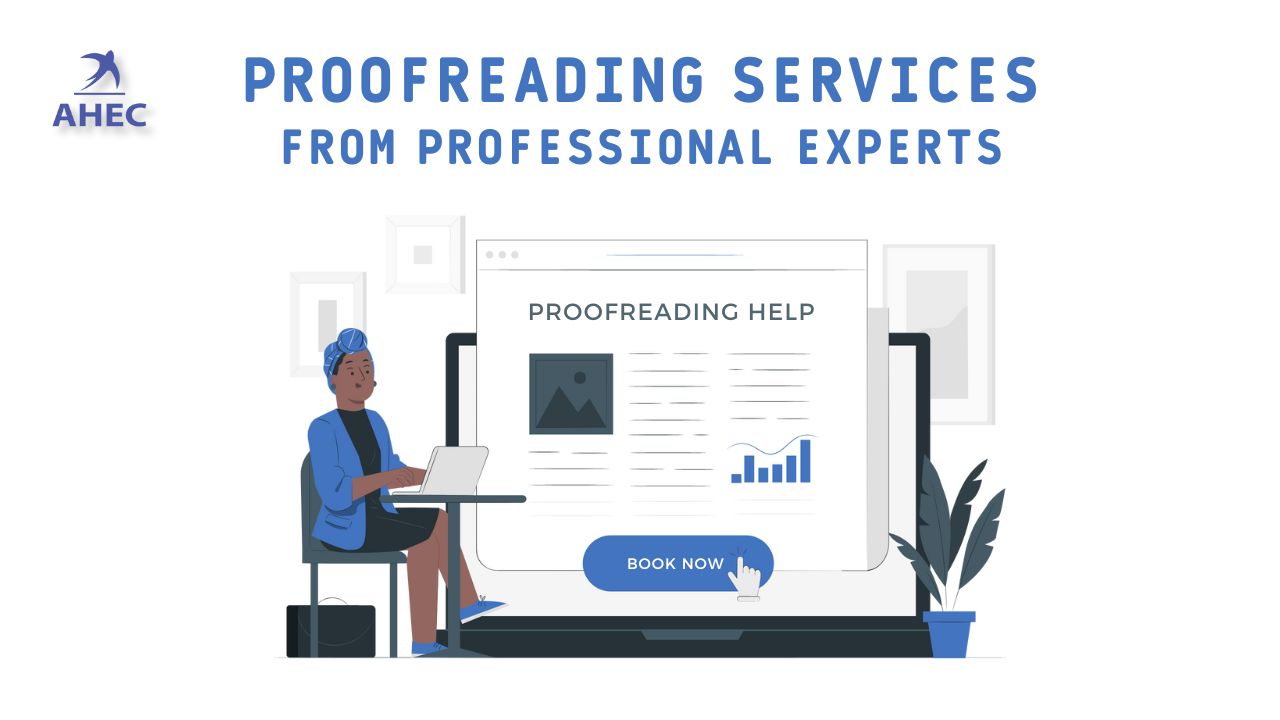
Best Online Proofreading Services

Need Help With Your Academic Assignment
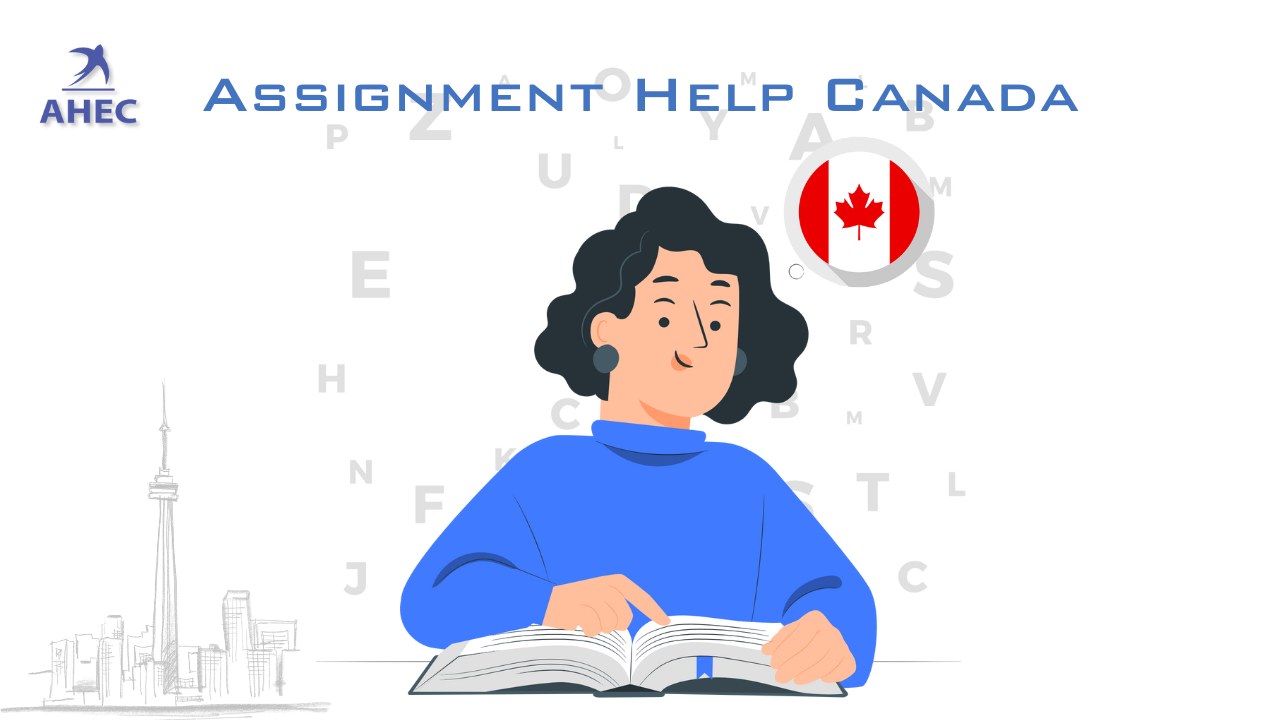
Assignment Writing Help In Canada

Assignment Writing Help In UAE

Online Assignment Writing Help in the USA

Assignment Writing Help In Australia

Assignment Writing Help In the UK

Scholarship Essay Writing Help

University of Huddersfield Assignment Help

Ph.D. Assignment Writing Help

Law Assignment Writing Help

Website Design and Development Assignment Help
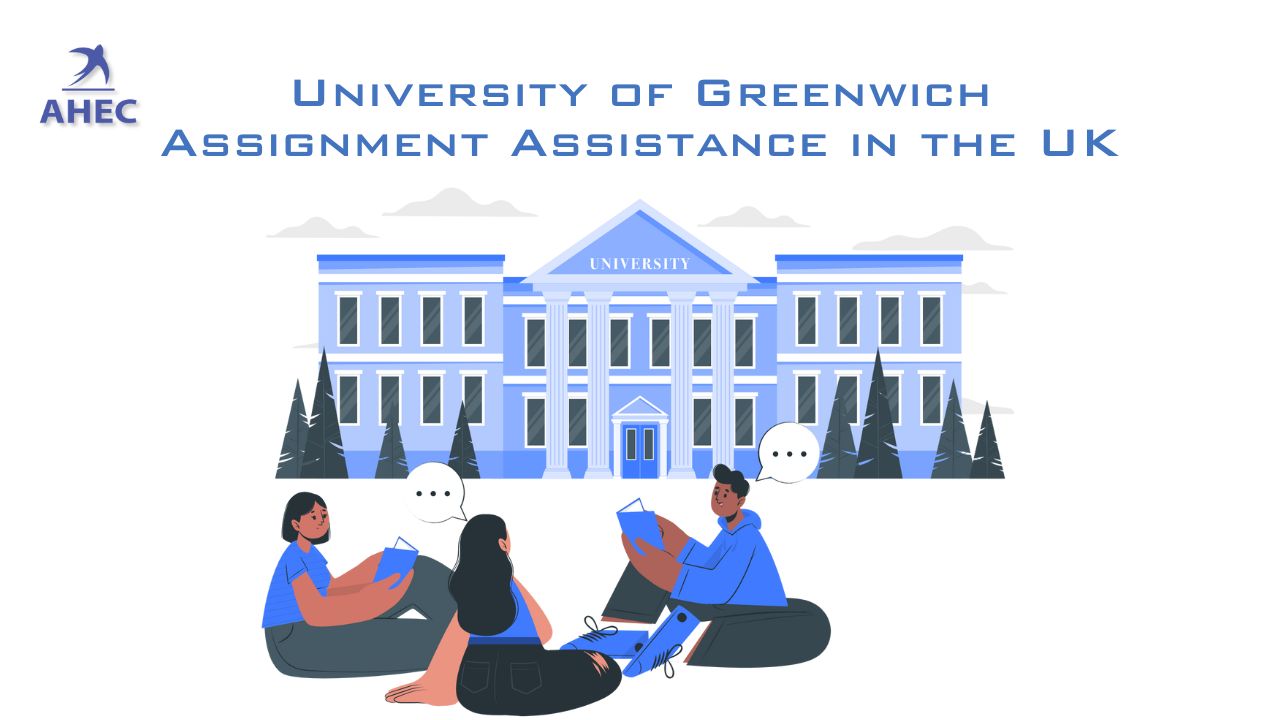
University of Greenwich Assignment Assistance in the UK

University of Warwick Assignment Writing Help

Academic Counselling Sessions

Academic Counselling and Sample Service

Professional Proofreading Services

Technical Assistance

Counseling Sample & Proofreading

Agroecology Assignment Help

MBA Assignment Help
How long a Research Paper should be
You might be thinking about what length your research paper must be. You're not all on your own. Students are constantly asking what is the ideal length of their term papers. This issue can be complicated if your instructor hasn't provided you with the maximum page as well as the word count.
Research papers are extremely complex due to the fact that they are academic papers that are based upon your research done on the subject you are researching. This is the reason why our help with writing papers will be helpful for getting that A.
Whatever approach you pick you will need to include an analysis, as well as a conclusion of your results in order to be comprehensive. In taking all of these factors into consideration, students frequently think about how long their research paper ought to be. Let's take a look in detail;
How long should each component of a research paper last?
In general, the ideal length for a research paper is 5 pages for shorter papers as well as 10 pages for lengthy ones. The exact length of your term paper should be decided by your instructor and the guidelines they provide. This will be determined by a variety of elements, such as the size or depth topic.
Factors that determine the length of the Paper
The issue of the length of a research paper is a difficult one to answer since it is based on a variety of aspects. The primary elements to determine the length of your research paper are:
- Your subject for your study
- The variety of topics that emerge from the subject
- Complexity and number of subtopics,
- The extent of your research
- The scope of your discussion and your conclusions.
If all those variables remain the same It is feasible to determine how long a simpler research paper when it is separated into sections, which include the outline introduction, introduction, paragraphs, conclusion, and reference page.
These are the essential elements of an average research paper. Let's examine the length of each section that is required to be.
What is a good outline for a term paper should be
An outline is an essential component of your study paper. It defines the structure of your essay. It organizes the content in your paper's segments.
The outline, however, is not a complete description of the paper. It simply highlights the subjects to be discussed as well as the issues that need to be addressed within those subjects.
A format for an outline should contain the following elements:
- An Introduction
- The issue is being addressed
- A Literature review
- Methodology
- Discussion and results
- Conclusion and recommendation
The brief descriptions of full sentences are available in the five sections which provide the guidelines to write your research. Thus, the outline shouldn't exceed two pages in the case of short research papers, and 4 and 5 pages for longer research papers that range from 15-20 pages.
Optimal Length of a Research Paper Introduction
As we've already mentioned that how long you write your essay is determined by the subject and its content. The same is true for the introduction. In a typical research paper, the introduction should not be more than half of a page.
But, if you're writing a lengthy essay of at least 15 pages, your introduction might be as long as one page or even several paragraphs. Because the majority of research papers that are given to college students at the beginning of their studies aren't long and short, the length of your introduction should not exceed one page.
The length that is recommended for each paragraph in research papers
Although there aren't specific rules that define the length of each paragraph in a document the recommended length should be between 90 to 130 words. Any paragraph that is less than 90 words is considered as being too short to be able to stand on its own and one with more than 130 words is considered to be too argumentative.
However, it is vital to keep in mind that the length of the paragraph will be determined by how long the document is. If the paper is small and the paragraphs are short, they should be brief.
If the research paper is lengthy and the paragraphs must be more extensive. A paragraph must be longer than just four paragraphs. For certain topics, such as childhood obesity, your paragraphs can be extended in order to incorporate the data and statistics into your article.
Since each paragraph should concentrate on one concept The length of each paragraph is determined by the text supporting it.
If your idea needs an extensive amount of information by way of images, illustrations, figures and paraphrases, quotes and definitions, as well as causes and consequences, then the paragraph will be more lengthy.
If the notion of the paragraph is simple and doesn't require much evidence, it can be shortened.
The paragraphs add information and information to an outline. The outline includes topics, subtopics, and guidelines. While the paragraphs provide content and additional explanations.
How Long Should a Conclusion be
Conclusions are an extremely vital aspect of your paper. It is because your role as the writer of your essay is wrapping up all the information you've discussed in your research paper. The length of your conclusion is dependent on the size of your article.
The longer the essay is, the longer the conclusion. The less its length, the smaller the conclusion. The conclusion should not be less than 3 sentences. It could take you a few hours to write these parts of your paper.
Although this may be true, a valid conclusion must have these features.
What makes a good term paper conclusion
- Summary of the subject of your study
- Thesis restatement. The statement you make should not be the same as the one you made in your introduction.
- Write a synopsis of your major aspects. Don't give any information that is new.
- You could also combine your points to elaborate on the importance of your arguments.
- Create a call to action only if it's relevant or important to the content of your document.
- Answer"the "so what" question. It is important to describe the purpose of your essay and the reason why it is important to your readers.
In this way, it's clear that the concluding paragraph is crucial when writing your paper. It is possible to not include all of these however it is crucial to summarize the thesis, your topic, and the major elements of your research paper. Read our guide to writing research papers for more information you can write these pieces.
How much should you keep on the Reference Page?
The length of your reference page depends on the number of sources that you've utilized in your essay. Your essay could be long when you have only a few sources, whereas other papers could be shorter when using many sources.
A quality term paper must include a reference page that lists all sources for your data. If you list your sources using the correct format for references, such as APA and MLA The amount of space on the page isn't absolute.
Frequently asked questions
How long should a high school term paper be , what is the ideal length for a graduate paper , how long should a middle school term paper be , how long should a research paper's literature review be , how to write a term paper quickly .
To begin writing a research paper quickly, choose a topic. Following that, you will conduct research on the topic and work on a thesis. Create an outline to help you write the structure of your paper. Write the paper according to the outline, beginning with an introduction and ending with a conclusion. Finally, proofread your paper to catch any mistakes. Read our checklist for revising your paper to a final draught.
What are the most common formats for research papers ?
You must use a specific formatting style when formatting a research or term paper. MLA, APA, Chicago, and Harvard are the most common research paper formats. Each format specifies the paper's style, spacing, in-text citation style, and reference page style. You can get all of these things done for you if you pay someone to write your homework.
How long is the average academic journal article ?
How long should a research paper take , how long is a short research paper , how long is a typical college research paper , what makes a good research paper , what makes a research paper low quality .
A low-quality study has findings that are uninterpretable, very likely to be incorrect, or have a high risk of bias. As a result, papers with a lot of jargon, poor diction, and bad grammar are usually rejected by publishers.
Is it possible to fail a research paper ?
Can you resubmit a rejected paper , how many pages is a typical journal , how many paragraphs should be in a research paper .

Top 10 Best Universities Ranking list in India 2022

Generic Conventions: Assignment Help Services

Research Paper Topics For Medical

Top 5 Resources for Writing Excellent Academic Assignments

How to Write a Literature Review for Academic Purposes

Tips for Writing a killer introduction to your assignment

How To Write A Compelling Conclusion For Your University Assignment

Research Papers Topics For Social Science

Best 150 New Research Paper Ideas For Students

7 Best Plagiarism Checkers for Students And Teachers in 2024
Enquiry form.
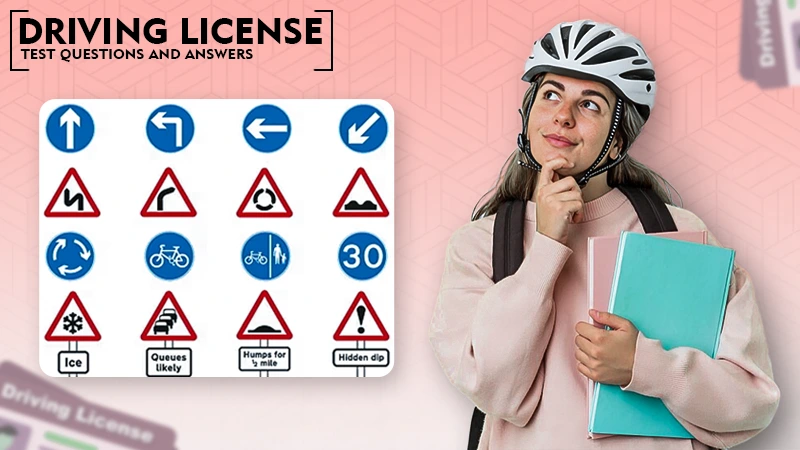

Want to create or adapt books like this? Learn more about how Pressbooks supports open publishing practices.
13.1 Formatting a Research Paper
Learning objectives.
- Identify the major components of a research paper written using American Psychological Association (APA) style.
- Apply general APA style and formatting conventions in a research paper.
In this chapter, you will learn how to use APA style , the documentation and formatting style followed by the American Psychological Association, as well as MLA style , from the Modern Language Association. There are a few major formatting styles used in academic texts, including AMA, Chicago, and Turabian:
- AMA (American Medical Association) for medicine, health, and biological sciences
- APA (American Psychological Association) for education, psychology, and the social sciences
- Chicago—a common style used in everyday publications like magazines, newspapers, and books
- MLA (Modern Language Association) for English, literature, arts, and humanities
- Turabian—another common style designed for its universal application across all subjects and disciplines
While all the formatting and citation styles have their own use and applications, in this chapter we focus our attention on the two styles you are most likely to use in your academic studies: APA and MLA.
If you find that the rules of proper source documentation are difficult to keep straight, you are not alone. Writing a good research paper is, in and of itself, a major intellectual challenge. Having to follow detailed citation and formatting guidelines as well may seem like just one more task to add to an already-too-long list of requirements.
Following these guidelines, however, serves several important purposes. First, it signals to your readers that your paper should be taken seriously as a student’s contribution to a given academic or professional field; it is the literary equivalent of wearing a tailored suit to a job interview. Second, it shows that you respect other people’s work enough to give them proper credit for it. Finally, it helps your reader find additional materials if he or she wishes to learn more about your topic.
Furthermore, producing a letter-perfect APA-style paper need not be burdensome. Yes, it requires careful attention to detail. However, you can simplify the process if you keep these broad guidelines in mind:
- Work ahead whenever you can. Chapter 11 “Writing from Research: What Will I Learn?” includes tips for keeping track of your sources early in the research process, which will save time later on.
- Get it right the first time. Apply APA guidelines as you write, so you will not have much to correct during the editing stage. Again, putting in a little extra time early on can save time later.
- Use the resources available to you. In addition to the guidelines provided in this chapter, you may wish to consult the APA website at http://www.apa.org or the Purdue University Online Writing lab at http://owl.english.purdue.edu , which regularly updates its online style guidelines.
General Formatting Guidelines
This chapter provides detailed guidelines for using the citation and formatting conventions developed by the American Psychological Association, or APA. Writers in disciplines as diverse as astrophysics, biology, psychology, and education follow APA style. The major components of a paper written in APA style are listed in the following box.
These are the major components of an APA-style paper:
Body, which includes the following:
- Headings and, if necessary, subheadings to organize the content
- In-text citations of research sources
- References page
All these components must be saved in one document, not as separate documents.
The title page of your paper includes the following information:
- Title of the paper
- Author’s name
- Name of the institution with which the author is affiliated
- Header at the top of the page with the paper title (in capital letters) and the page number (If the title is lengthy, you may use a shortened form of it in the header.)
List the first three elements in the order given in the previous list, centered about one third of the way down from the top of the page. Use the headers and footers tool of your word-processing program to add the header, with the title text at the left and the page number in the upper-right corner. Your title page should look like the following example.

The next page of your paper provides an abstract , or brief summary of your findings. An abstract does not need to be provided in every paper, but an abstract should be used in papers that include a hypothesis. A good abstract is concise—about one hundred fifty to two hundred fifty words—and is written in an objective, impersonal style. Your writing voice will not be as apparent here as in the body of your paper. When writing the abstract, take a just-the-facts approach, and summarize your research question and your findings in a few sentences.
In Chapter 12 “Writing a Research Paper” , you read a paper written by a student named Jorge, who researched the effectiveness of low-carbohydrate diets. Read Jorge’s abstract. Note how it sums up the major ideas in his paper without going into excessive detail.

Write an abstract summarizing your paper. Briefly introduce the topic, state your findings, and sum up what conclusions you can draw from your research. Use the word count feature of your word-processing program to make sure your abstract does not exceed one hundred fifty words.
Depending on your field of study, you may sometimes write research papers that present extensive primary research, such as your own experiment or survey. In your abstract, summarize your research question and your findings, and briefly indicate how your study relates to prior research in the field.
Margins, Pagination, and Headings
APA style requirements also address specific formatting concerns, such as margins, pagination, and heading styles, within the body of the paper. Review the following APA guidelines.
Use these general guidelines to format the paper:
- Set the top, bottom, and side margins of your paper at 1 inch.
- Use double-spaced text throughout your paper.
- Use a standard font, such as Times New Roman or Arial, in a legible size (10- to 12-point).
- Use continuous pagination throughout the paper, including the title page and the references section. Page numbers appear flush right within your header.
- Section headings and subsection headings within the body of your paper use different types of formatting depending on the level of information you are presenting. Additional details from Jorge’s paper are provided.

Begin formatting the final draft of your paper according to APA guidelines. You may work with an existing document or set up a new document if you choose. Include the following:
- Your title page
- The abstract you created in Note 13.8 “Exercise 1”
- Correct headers and page numbers for your title page and abstract
APA style uses section headings to organize information, making it easy for the reader to follow the writer’s train of thought and to know immediately what major topics are covered. Depending on the length and complexity of the paper, its major sections may also be divided into subsections, sub-subsections, and so on. These smaller sections, in turn, use different heading styles to indicate different levels of information. In essence, you are using headings to create a hierarchy of information.
The following heading styles used in APA formatting are listed in order of greatest to least importance:
- Section headings use centered, boldface type. Headings use title case, with important words in the heading capitalized.
- Subsection headings use left-aligned, boldface type. Headings use title case.
- The third level uses left-aligned, indented, boldface type. Headings use a capital letter only for the first word, and they end in a period.
- The fourth level follows the same style used for the previous level, but the headings are boldfaced and italicized.
- The fifth level follows the same style used for the previous level, but the headings are italicized and not boldfaced.
Visually, the hierarchy of information is organized as indicated in Table 13.1 “Section Headings” .
Table 13.1 Section Headings
| Level of Information | Text Example |
|---|---|
| Level 1 | |
| Level 2 | |
| Level 3 | |
| Level 4 | |
| Level 5 |
A college research paper may not use all the heading levels shown in Table 13.1 “Section Headings” , but you are likely to encounter them in academic journal articles that use APA style. For a brief paper, you may find that level 1 headings suffice. Longer or more complex papers may need level 2 headings or other lower-level headings to organize information clearly. Use your outline to craft your major section headings and determine whether any subtopics are substantial enough to require additional levels of headings.
Working with the document you developed in Note 13.11 “Exercise 2” , begin setting up the heading structure of the final draft of your research paper according to APA guidelines. Include your title and at least two to three major section headings, and follow the formatting guidelines provided above. If your major sections should be broken into subsections, add those headings as well. Use your outline to help you.
Because Jorge used only level 1 headings, his Exercise 3 would look like the following:
| Level of Information | Text Example |
|---|---|
| Level 1 | |
| Level 1 | |
| Level 1 | |
| Level 1 |
Citation Guidelines
In-text citations.
Throughout the body of your paper, include a citation whenever you quote or paraphrase material from your research sources. As you learned in Chapter 11 “Writing from Research: What Will I Learn?” , the purpose of citations is twofold: to give credit to others for their ideas and to allow your reader to follow up and learn more about the topic if desired. Your in-text citations provide basic information about your source; each source you cite will have a longer entry in the references section that provides more detailed information.
In-text citations must provide the name of the author or authors and the year the source was published. (When a given source does not list an individual author, you may provide the source title or the name of the organization that published the material instead.) When directly quoting a source, it is also required that you include the page number where the quote appears in your citation.
This information may be included within the sentence or in a parenthetical reference at the end of the sentence, as in these examples.
Epstein (2010) points out that “junk food cannot be considered addictive in the same way that we think of psychoactive drugs as addictive” (p. 137).
Here, the writer names the source author when introducing the quote and provides the publication date in parentheses after the author’s name. The page number appears in parentheses after the closing quotation marks and before the period that ends the sentence.
Addiction researchers caution that “junk food cannot be considered addictive in the same way that we think of psychoactive drugs as addictive” (Epstein, 2010, p. 137).
Here, the writer provides a parenthetical citation at the end of the sentence that includes the author’s name, the year of publication, and the page number separated by commas. Again, the parenthetical citation is placed after the closing quotation marks and before the period at the end of the sentence.
As noted in the book Junk Food, Junk Science (Epstein, 2010, p. 137), “junk food cannot be considered addictive in the same way that we think of psychoactive drugs as addictive.”
Here, the writer chose to mention the source title in the sentence (an optional piece of information to include) and followed the title with a parenthetical citation. Note that the parenthetical citation is placed before the comma that signals the end of the introductory phrase.
David Epstein’s book Junk Food, Junk Science (2010) pointed out that “junk food cannot be considered addictive in the same way that we think of psychoactive drugs as addictive” (p. 137).
Another variation is to introduce the author and the source title in your sentence and include the publication date and page number in parentheses within the sentence or at the end of the sentence. As long as you have included the essential information, you can choose the option that works best for that particular sentence and source.
Citing a book with a single author is usually a straightforward task. Of course, your research may require that you cite many other types of sources, such as books or articles with more than one author or sources with no individual author listed. You may also need to cite sources available in both print and online and nonprint sources, such as websites and personal interviews. Chapter 13 “APA and MLA Documentation and Formatting” , Section 13.2 “Citing and Referencing Techniques” and Section 13.3 “Creating a References Section” provide extensive guidelines for citing a variety of source types.
Writing at Work
APA is just one of several different styles with its own guidelines for documentation, formatting, and language usage. Depending on your field of interest, you may be exposed to additional styles, such as the following:
- MLA style. Determined by the Modern Languages Association and used for papers in literature, languages, and other disciplines in the humanities.
- Chicago style. Outlined in the Chicago Manual of Style and sometimes used for papers in the humanities and the sciences; many professional organizations use this style for publications as well.
- Associated Press (AP) style. Used by professional journalists.
References List
The brief citations included in the body of your paper correspond to the more detailed citations provided at the end of the paper in the references section. In-text citations provide basic information—the author’s name, the publication date, and the page number if necessary—while the references section provides more extensive bibliographical information. Again, this information allows your reader to follow up on the sources you cited and do additional reading about the topic if desired.
The specific format of entries in the list of references varies slightly for different source types, but the entries generally include the following information:
- The name(s) of the author(s) or institution that wrote the source
- The year of publication and, where applicable, the exact date of publication
- The full title of the source
- For books, the city of publication
- For articles or essays, the name of the periodical or book in which the article or essay appears
- For magazine and journal articles, the volume number, issue number, and pages where the article appears
- For sources on the web, the URL where the source is located
The references page is double spaced and lists entries in alphabetical order by the author’s last name. If an entry continues for more than one line, the second line and each subsequent line are indented five spaces. Review the following example. ( Chapter 13 “APA and MLA Documentation and Formatting” , Section 13.3 “Creating a References Section” provides extensive guidelines for formatting reference entries for different types of sources.)

In APA style, book and article titles are formatted in sentence case, not title case. Sentence case means that only the first word is capitalized, along with any proper nouns.
Key Takeaways
- Following proper citation and formatting guidelines helps writers ensure that their work will be taken seriously, give proper credit to other authors for their work, and provide valuable information to readers.
- Working ahead and taking care to cite sources correctly the first time are ways writers can save time during the editing stage of writing a research paper.
- APA papers usually include an abstract that concisely summarizes the paper.
- APA papers use a specific headings structure to provide a clear hierarchy of information.
- In APA papers, in-text citations usually include the name(s) of the author(s) and the year of publication.
- In-text citations correspond to entries in the references section, which provide detailed bibliographical information about a source.
Writing for Success Copyright © 2015 by University of Minnesota is licensed under a Creative Commons Attribution-NonCommercial-ShareAlike 4.0 International License , except where otherwise noted.
- How to write a research paper
Last updated
11 January 2024
Reviewed by
With proper planning, knowledge, and framework, completing a research paper can be a fulfilling and exciting experience.
Though it might initially sound slightly intimidating, this guide will help you embrace the challenge.
By documenting your findings, you can inspire others and make a difference in your field. Here's how you can make your research paper unique and comprehensive.
- What is a research paper?
Research papers allow you to demonstrate your knowledge and understanding of a particular topic. These papers are usually lengthier and more detailed than typical essays, requiring deeper insight into the chosen topic.
To write a research paper, you must first choose a topic that interests you and is relevant to the field of study. Once you’ve selected your topic, gathering as many relevant resources as possible, including books, scholarly articles, credible websites, and other academic materials, is essential. You must then read and analyze these sources, summarizing their key points and identifying gaps in the current research.
You can formulate your ideas and opinions once you thoroughly understand the existing research. To get there might involve conducting original research, gathering data, or analyzing existing data sets. It could also involve presenting an original argument or interpretation of the existing research.
Writing a successful research paper involves presenting your findings clearly and engagingly, which might involve using charts, graphs, or other visual aids to present your data and using concise language to explain your findings. You must also ensure your paper adheres to relevant academic formatting guidelines, including proper citations and references.
Overall, writing a research paper requires a significant amount of time, effort, and attention to detail. However, it is also an enriching experience that allows you to delve deeply into a subject that interests you and contribute to the existing body of knowledge in your chosen field.
- How long should a research paper be?
Research papers are deep dives into a topic. Therefore, they tend to be longer pieces of work than essays or opinion pieces.
However, a suitable length depends on the complexity of the topic and your level of expertise. For instance, are you a first-year college student or an experienced professional?
Also, remember that the best research papers provide valuable information for the benefit of others. Therefore, the quality of information matters most, not necessarily the length. Being concise is valuable.
Following these best practice steps will help keep your process simple and productive:
1. Gaining a deep understanding of any expectations
Before diving into your intended topic or beginning the research phase, take some time to orient yourself. Suppose there’s a specific topic assigned to you. In that case, it’s essential to deeply understand the question and organize your planning and approach in response. Pay attention to the key requirements and ensure you align your writing accordingly.
This preparation step entails
Deeply understanding the task or assignment
Being clear about the expected format and length
Familiarizing yourself with the citation and referencing requirements
Understanding any defined limits for your research contribution
Where applicable, speaking to your professor or research supervisor for further clarification
2. Choose your research topic
Select a research topic that aligns with both your interests and available resources. Ideally, focus on a field where you possess significant experience and analytical skills. In crafting your research paper, it's crucial to go beyond summarizing existing data and contribute fresh insights to the chosen area.
Consider narrowing your focus to a specific aspect of the topic. For example, if exploring the link between technology and mental health, delve into how social media use during the pandemic impacts the well-being of college students. Conducting interviews and surveys with students could provide firsthand data and unique perspectives, adding substantial value to the existing knowledge.
When finalizing your topic, adhere to legal and ethical norms in the relevant area (this ensures the integrity of your research, protects participants' rights, upholds intellectual property standards, and ensures transparency and accountability). Following these principles not only maintains the credibility of your work but also builds trust within your academic or professional community.
For instance, in writing about medical research, consider legal and ethical norms , including patient confidentiality laws and informed consent requirements. Similarly, if analyzing user data on social media platforms, be mindful of data privacy regulations, ensuring compliance with laws governing personal information collection and use. Aligning with legal and ethical standards not only avoids potential issues but also underscores the responsible conduct of your research.
3. Gather preliminary research
Once you’ve landed on your topic, it’s time to explore it further. You’ll want to discover more about available resources and existing research relevant to your assignment at this stage.
This exploratory phase is vital as you may discover issues with your original idea or realize you have insufficient resources to explore the topic effectively. This key bit of groundwork allows you to redirect your research topic in a different, more feasible, or more relevant direction if necessary.
Spending ample time at this stage ensures you gather everything you need, learn as much as you can about the topic, and discover gaps where the topic has yet to be sufficiently covered, offering an opportunity to research it further.
4. Define your research question
To produce a well-structured and focused paper, it is imperative to formulate a clear and precise research question that will guide your work. Your research question must be informed by the existing literature and tailored to the scope and objectives of your project. By refining your focus, you can produce a thoughtful and engaging paper that effectively communicates your ideas to your readers.
5. Write a thesis statement
A thesis statement is a one-to-two-sentence summary of your research paper's main argument or direction. It serves as an overall guide to summarize the overall intent of the research paper for you and anyone wanting to know more about the research.
A strong thesis statement is:
Concise and clear: Explain your case in simple sentences (avoid covering multiple ideas). It might help to think of this section as an elevator pitch.
Specific: Ensure that there is no ambiguity in your statement and that your summary covers the points argued in the paper.
Debatable: A thesis statement puts forward a specific argument––it is not merely a statement but a debatable point that can be analyzed and discussed.
Here are three thesis statement examples from different disciplines:
Psychology thesis example: "We're studying adults aged 25-40 to see if taking short breaks for mindfulness can help with stress. Our goal is to find practical ways to manage anxiety better."
Environmental science thesis example: "This research paper looks into how having more city parks might make the air cleaner and keep people healthier. I want to find out if more green spaces means breathing fewer carcinogens in big cities."
UX research thesis example: "This study focuses on improving mobile banking for older adults using ethnographic research, eye-tracking analysis, and interactive prototyping. We investigate the usefulness of eye-tracking analysis with older individuals, aiming to spark debate and offer fresh perspectives on UX design and digital inclusivity for the aging population."
6. Conduct in-depth research
A research paper doesn’t just include research that you’ve uncovered from other papers and studies but your fresh insights, too. You will seek to become an expert on your topic––understanding the nuances in the current leading theories. You will analyze existing research and add your thinking and discoveries. It's crucial to conduct well-designed research that is rigorous, robust, and based on reliable sources. Suppose a research paper lacks evidence or is biased. In that case, it won't benefit the academic community or the general public. Therefore, examining the topic thoroughly and furthering its understanding through high-quality research is essential. That usually means conducting new research. Depending on the area under investigation, you may conduct surveys, interviews, diary studies , or observational research to uncover new insights or bolster current claims.
7. Determine supporting evidence
Not every piece of research you’ve discovered will be relevant to your research paper. It’s important to categorize the most meaningful evidence to include alongside your discoveries. It's important to include evidence that doesn't support your claims to avoid exclusion bias and ensure a fair research paper.
8. Write a research paper outline
Before diving in and writing the whole paper, start with an outline. It will help you to see if more research is needed, and it will provide a framework by which to write a more compelling paper. Your supervisor may even request an outline to approve before beginning to write the first draft of the full paper. An outline will include your topic, thesis statement, key headings, short summaries of the research, and your arguments.
9. Write your first draft
Once you feel confident about your outline and sources, it’s time to write your first draft. While penning a long piece of content can be intimidating, if you’ve laid the groundwork, you will have a structure to help you move steadily through each section. To keep up motivation and inspiration, it’s often best to keep the pace quick. Stopping for long periods can interrupt your flow and make jumping back in harder than writing when things are fresh in your mind.
10. Cite your sources correctly
It's always a good practice to give credit where it's due, and the same goes for citing any works that have influenced your paper. Building your arguments on credible references adds value and authenticity to your research. In the formatting guidelines section, you’ll find an overview of different citation styles (MLA, CMOS, or APA), which will help you meet any publishing or academic requirements and strengthen your paper's credibility. It is essential to follow the guidelines provided by your school or the publication you are submitting to ensure the accuracy and relevance of your citations.
11. Ensure your work is original
It is crucial to ensure the originality of your paper, as plagiarism can lead to serious consequences. To avoid plagiarism, you should use proper paraphrasing and quoting techniques. Paraphrasing is rewriting a text in your own words while maintaining the original meaning. Quoting involves directly citing the source. Giving credit to the original author or source is essential whenever you borrow their ideas or words. You can also use plagiarism detection tools such as Scribbr or Grammarly to check the originality of your paper. These tools compare your draft writing to a vast database of online sources. If you find any accidental plagiarism, you should correct it immediately by rephrasing or citing the source.
12. Revise, edit, and proofread
One of the essential qualities of excellent writers is their ability to understand the importance of editing and proofreading. Even though it's tempting to call it a day once you've finished your writing, editing your work can significantly improve its quality. It's natural to overlook the weaker areas when you've just finished writing a paper. Therefore, it's best to take a break of a day or two, or even up to a week, to refresh your mind. This way, you can return to your work with a new perspective. After some breathing room, you can spot any inconsistencies, spelling and grammar errors, typos, or missing citations and correct them.
- The best research paper format
The format of your research paper should align with the requirements set forth by your college, school, or target publication.
There is no one “best” format, per se. Depending on the stated requirements, you may need to include the following elements:
Title page: The title page of a research paper typically includes the title, author's name, and institutional affiliation and may include additional information such as a course name or instructor's name.
Table of contents: Include a table of contents to make it easy for readers to find specific sections of your paper.
Abstract: The abstract is a summary of the purpose of the paper.
Methods : In this section, describe the research methods used. This may include collecting data , conducting interviews, or doing field research .
Results: Summarize the conclusions you drew from your research in this section.
Discussion: In this section, discuss the implications of your research . Be sure to mention any significant limitations to your approach and suggest areas for further research.
Tables, charts, and illustrations: Use tables, charts, and illustrations to help convey your research findings and make them easier to understand.
Works cited or reference page: Include a works cited or reference page to give credit to the sources that you used to conduct your research.
Bibliography: Provide a list of all the sources you consulted while conducting your research.
Dedication and acknowledgments : Optionally, you may include a dedication and acknowledgments section to thank individuals who helped you with your research.
- General style and formatting guidelines
Formatting your research paper means you can submit it to your college, journal, or other publications in compliance with their criteria.
Research papers tend to follow the American Psychological Association (APA), Modern Language Association (MLA), or Chicago Manual of Style (CMOS) guidelines.
Here’s how each style guide is typically used:
Chicago Manual of Style (CMOS):
CMOS is a versatile style guide used for various types of writing. It's known for its flexibility and use in the humanities. CMOS provides guidelines for citations, formatting, and overall writing style. It allows for both footnotes and in-text citations, giving writers options based on their preferences or publication requirements.
American Psychological Association (APA):
APA is common in the social sciences. It’s hailed for its clarity and emphasis on precision. It has specific rules for citing sources, creating references, and formatting papers. APA style uses in-text citations with an accompanying reference list. It's designed to convey information efficiently and is widely used in academic and scientific writing.
Modern Language Association (MLA):
MLA is widely used in the humanities, especially literature and language studies. It emphasizes the author-page format for in-text citations and provides guidelines for creating a "Works Cited" page. MLA is known for its focus on the author's name and the literary works cited. It’s frequently used in disciplines that prioritize literary analysis and critical thinking.
To confirm you're using the latest style guide, check the official website or publisher's site for updates, consult academic resources, and verify the guide's publication date. Online platforms and educational resources may also provide summaries and alerts about any revisions or additions to the style guide.
Citing sources
When working on your research paper, it's important to cite the sources you used properly. Your citation style will guide you through this process. Generally, there are three parts to citing sources in your research paper:
First, provide a brief citation in the body of your essay. This is also known as a parenthetical or in-text citation.
Second, include a full citation in the Reference list at the end of your paper. Different types of citations include in-text citations, footnotes, and reference lists.
In-text citations include the author's surname and the date of the citation.
Footnotes appear at the bottom of each page of your research paper. They may also be summarized within a reference list at the end of the paper.
A reference list includes all of the research used within the paper at the end of the document. It should include the author, date, paper title, and publisher listed in the order that aligns with your citation style.
10 research paper writing tips:
Following some best practices is essential to writing a research paper that contributes to your field of study and creates a positive impact.
These tactics will help you structure your argument effectively and ensure your work benefits others:
Clear and precise language: Ensure your language is unambiguous. Use academic language appropriately, but keep it simple. Also, provide clear takeaways for your audience.
Effective idea separation: Organize the vast amount of information and sources in your paper with paragraphs and titles. Create easily digestible sections for your readers to navigate through.
Compelling intro: Craft an engaging introduction that captures your reader's interest. Hook your audience and motivate them to continue reading.
Thorough revision and editing: Take the time to review and edit your paper comprehensively. Use tools like Grammarly to detect and correct small, overlooked errors.
Thesis precision: Develop a clear and concise thesis statement that guides your paper. Ensure that your thesis aligns with your research's overall purpose and contribution.
Logical flow of ideas: Maintain a logical progression throughout the paper. Use transitions effectively to connect different sections and maintain coherence.
Critical evaluation of sources: Evaluate and critically assess the relevance and reliability of your sources. Ensure that your research is based on credible and up-to-date information.
Thematic consistency: Maintain a consistent theme throughout the paper. Ensure that all sections contribute cohesively to the overall argument.
Relevant supporting evidence: Provide concise and relevant evidence to support your arguments. Avoid unnecessary details that may distract from the main points.
Embrace counterarguments: Acknowledge and address opposing views to strengthen your position. Show that you have considered alternative arguments in your field.
7 research tips
If you want your paper to not only be well-written but also contribute to the progress of human knowledge, consider these tips to take your paper to the next level:
Selecting the appropriate topic: The topic you select should align with your area of expertise, comply with the requirements of your project, and have sufficient resources for a comprehensive investigation.
Use academic databases: Academic databases such as PubMed, Google Scholar, and JSTOR offer a wealth of research papers that can help you discover everything you need to know about your chosen topic.
Critically evaluate sources: It is important not to accept research findings at face value. Instead, it is crucial to critically analyze the information to avoid jumping to conclusions or overlooking important details. A well-written research paper requires a critical analysis with thorough reasoning to support claims.
Diversify your sources: Expand your research horizons by exploring a variety of sources beyond the standard databases. Utilize books, conference proceedings, and interviews to gather diverse perspectives and enrich your understanding of the topic.
Take detailed notes: Detailed note-taking is crucial during research and can help you form the outline and body of your paper.
Stay up on trends: Keep abreast of the latest developments in your field by regularly checking for recent publications. Subscribe to newsletters, follow relevant journals, and attend conferences to stay informed about emerging trends and advancements.
Engage in peer review: Seek feedback from peers or mentors to ensure the rigor and validity of your research . Peer review helps identify potential weaknesses in your methodology and strengthens the overall credibility of your findings.
- The real-world impact of research papers
Writing a research paper is more than an academic or business exercise. The experience provides an opportunity to explore a subject in-depth, broaden one's understanding, and arrive at meaningful conclusions. With careful planning, dedication, and hard work, writing a research paper can be a fulfilling and enriching experience contributing to advancing knowledge.
How do I publish my research paper?
Many academics wish to publish their research papers. While challenging, your paper might get traction if it covers new and well-written information. To publish your research paper, find a target publication, thoroughly read their guidelines, format your paper accordingly, and send it to them per their instructions. You may need to include a cover letter, too. After submission, your paper may be peer-reviewed by experts to assess its legitimacy, quality, originality, and methodology. Following review, you will be informed by the publication whether they have accepted or rejected your paper.
What is a good opening sentence for a research paper?
Beginning your research paper with a compelling introduction can ensure readers are interested in going further. A relevant quote, a compelling statistic, or a bold argument can start the paper and hook your reader. Remember, though, that the most important aspect of a research paper is the quality of the information––not necessarily your ability to storytell, so ensure anything you write aligns with your goals.
Research paper vs. a research proposal—what’s the difference?
While some may confuse research papers and proposals, they are different documents.
A research proposal comes before a research paper. It is a detailed document that outlines an intended area of exploration. It includes the research topic, methodology, timeline, sources, and potential conclusions. Research proposals are often required when seeking approval to conduct research.
A research paper is a summary of research findings. A research paper follows a structured format to present those findings and construct an argument or conclusion.
Should you be using a customer insights hub?
Do you want to discover previous research faster?
Do you share your research findings with others?
Do you analyze research data?
Start for free today, add your research, and get to key insights faster
Editor’s picks
Last updated: 18 April 2023
Last updated: 27 February 2023
Last updated: 22 August 2024
Last updated: 5 February 2023
Last updated: 16 August 2024
Last updated: 9 March 2023
Last updated: 30 April 2024
Last updated: 12 December 2023
Last updated: 11 March 2024
Last updated: 4 July 2024
Last updated: 6 March 2024
Last updated: 5 March 2024
Last updated: 13 May 2024
Latest articles
Related topics, .css-je19u9{-webkit-align-items:flex-end;-webkit-box-align:flex-end;-ms-flex-align:flex-end;align-items:flex-end;display:-webkit-box;display:-webkit-flex;display:-ms-flexbox;display:flex;-webkit-flex-direction:row;-ms-flex-direction:row;flex-direction:row;-webkit-box-flex-wrap:wrap;-webkit-flex-wrap:wrap;-ms-flex-wrap:wrap;flex-wrap:wrap;-webkit-box-pack:center;-ms-flex-pack:center;-webkit-justify-content:center;justify-content:center;row-gap:0;text-align:center;max-width:671px;}@media (max-width: 1079px){.css-je19u9{max-width:400px;}.css-je19u9>span{white-space:pre;}}@media (max-width: 799px){.css-je19u9{max-width:400px;}.css-je19u9>span{white-space:pre;}} decide what to .css-1kiodld{max-height:56px;display:-webkit-box;display:-webkit-flex;display:-ms-flexbox;display:flex;-webkit-align-items:center;-webkit-box-align:center;-ms-flex-align:center;align-items:center;}@media (max-width: 1079px){.css-1kiodld{display:none;}} build next, decide what to build next.
- 10 research paper
Log in or sign up
Get started for free
How Long Should a Research Paper Be?

Featured In
Table of contents, what is a research paper, how many pages should a research paper be, components of a research paper, how long should each component be, what is the average research paper length, how long does it take to write a research paper, what are the main elements of an effective summary for research papers, how many words should a research paper be, speechify text to speech, 4. microsoft word, 5. scrivener, 6. turnitin, 7. google scholar, 8. evernote, 9. mendeley, how long should a research paper take, can i write a research paper in 1 day, how long does it take to write a 20-page research paper, how long does it take to write a research paper for college.
When it comes to academic writing, one of the most common questions asked is: How long should a research paper be? This question is essential, as the length...
When it comes to academic writing, one of the most common questions asked is: How long should a research paper be? This question is essential, as the length can impact not only the scope but also the quality of the paper. In this article, we'll explore various elements that come into play when deciding the length of a research paper. We'll delve into the components, their specific lengths, and the average time required to compile an excellent research paper.
A research paper is a type of academic paper where the author conducts original research on a specific topic, interprets the findings, and then summarizes, argues, or presents the information. This form of academic writing requires in-depth analysis and a thorough literature review to establish credibility and relevance.
The number of pages in a research paper can vary significantly depending on the level of study, subject matter, and specific requirements set by the course or academic journal. High school papers may range from 5-20 pages, college-level papers from 10-30 pages, and graduate theses can be significantly longer, even reaching 100+ pages for Ph.D. dissertations. The spacing, citation style (APA, MLA, Chicago), and number of words also affect the paper's length.
A research paper typically consists of several key components, each with its importance:
- Title Page: The title page includes the paper's title, author's name, and institutional affiliation. This section is generally short but should be formatted according to the relevant citation style.
- Abstract: The abstract provides a concise summary of the research paper, often limited to 150-250 words, depending on the journal or academic requirements.
- Introduction: The intro presents the background, research question, and thesis statement. It sets the context and outlines the main points of the paper.
- Literature Review: This section reviews existing research related to your topic, offering a critical analysis of previous studies and identifying gaps your research aims to fill.
- Methods Section: The methodology details the procedures for collecting and analyzing data. This part should be explicit enough for another researcher to replicate your study.
- Results Section: Here, the findings of the research are presented in a structured manner, often supported by tables and graphs.
- Discussion Section: The discussion interprets the results, linking them to the research question and existing literature. It may also propose areas for future research.
- Conclusion: This section summarizes the main points and restates the thesis in light of the research findings.
- References Section: The references page lists all cited works in the paper, formatted according to the specific citation style being used.
- Appendices: The appendices provide additional data or material that is supplementary but not essential to the main text.
The length of each component depends on the overall length and complexity of the research paper. As a general guideline, the abstract might be 150-250 words, the introduction and conclusion around 10% of the entire paper each, literature review and methodology sections could be a few pages each, and the results and discussion sections might take up the rest of the paper.
The average length of a research paper varies widely depending on the field, level, and journal specifications. However, most academic papers range from 10-20 pages.
The time it takes to write a research paper can vary significantly. For college students or researchers familiar with the topic and the research process, it may take a few weeks. However, if it is your first time, it might take longer, possibly a few months. This time includes researching, writing the first draft, revising, proofreading, and finalizing the paper.
An effective summary, often in the form of an abstract, should include the research question, methodology, main findings, and conclusions. It must be concise while encapsulating the essential aspects of the paper.
The word count for a research paper depends on several factors, such as academic level, field of study, and specific guidelines. However, research papers commonly range from 2,500 to 10,000 words.
Top 9 Tools Needed to Write Long Research Papers
Cost : Free to try
Speechify Text to Speech is a groundbreaking tool that has revolutionized the way individuals consume text-based content. By leveraging advanced text-to-speech technology, Speechify transforms written text into lifelike spoken words, making it incredibly useful for those with reading disabilities, visual impairments, or simply those who prefer auditory learning. Its adaptive capabilities ensure seamless integration with a wide range of devices and platforms, offering users the flexibility to listen on-the-go.
Top 5 Speechify TTS Features :
- High-Quality Voices : Speechify offers a variety of high-quality, lifelike voices across multiple languages. This ensures that users have a natural listening experience, making it easier to understand and engage with the content.
- Seamless Integration : Speechify can integrate with various platforms and devices, including web browsers, smartphones, and more. This means users can easily convert text from websites, emails, PDFs, and other sources into speech almost instantly.
- Speed Control : Users have the ability to adjust the playback speed according to their preference, making it possible to either quickly skim through content or delve deep into it at a slower pace.
- Offline Listening : One of the significant features of Speechify is the ability to save and listen to converted text offline, ensuring uninterrupted access to content even without an internet connection.
- Highlighting Text : As the text is read aloud, Speechify highlights the corresponding section, allowing users to visually track the content being spoken. This simultaneous visual and auditory input can enhance comprehension and retention for many users.
Cost : Free basic version; premium plans start at $11.66/month.
Grammarly is a crucial tool for academic writing, helping with everything from grammar errors to plagiarism. Its real-time feedback can make the difference between a rough first draft and a polished piece of original research. Grammarly is particularly helpful for students whose first language is not English.
Grammarly also offers a word count feature that can help you gauge how long your research paper is turning out. This can be particularly useful if you're writing a term paper with a strict word limit. It supports different citation styles like APA, MLA, and Chicago, which are critical for formatting in-text citations and references section correctly.
Top 5 Features
- Grammar and spelling check
- Plagiarism detection
- Tone and style analysis
- Word count tracker
- Sentence structure analysis
Cost : Free with optional paid storage.
Zotero stands as one of the best tools for managing references for your research paper. Forget the hassle of manually writing down your citations; Zotero automates this process. The tool helps you organize your research material and is excellent for keeping track of your literature review articles and journal citations.
Zotero is not just a one-stop-shop for citation needs. It also offers collaborative features, making it suitable for team research projects. Its cross-platform support ensures you can switch between devices without losing your saved citations. The tool is a must-have for both high school and college students undertaking research papers.
- Citation and bibliography creation
- Research organization
- Cross-platform support
- Browser extension for easy source capture
- Collaboration features
Cost : Part of Microsoft Office Suite, pricing starts at $69.99/year.
Microsoft Word is perhaps the most traditional yet indispensable tool for academic writing. Most people are familiar with its basic functionalities, but Word also offers advanced features that can aid in the writing process of your research paper. From setting up your title page to managing page numbers and appendices, the software has it all.
The tool also helps in inserting in-text citations, endnotes, and footnotes. One of the underutilized features is the "Review" tab, which helps in tracking changes, something essential for revising and re-writing. Word is an all-rounder and has stood the test of time when it comes to academic writing, from your first time doing a paper to your last.
- Robust text editor
- In-built templates
- Spelling and grammar check
- Wide range of formatting options including APA, MLA, and Chicago
Cost : One-time payment of $49 for macOS and Windows, $19.99 for iOS.
Scrivener is a powerful tool that excels in helping you organize complex projects. While Microsoft Word is sufficient for shorter papers, Scrivener shines when you're working on a longer research paper or thesis. Its corkboard view allows you to see the structure of your entire paper, from the intro to the results and discussion sections.
The software offers templates designed for academic papers, making it easier to start your project without worrying about formatting. It has a split-screen feature, allowing you to refer to your research or another section of your paper while writing. The tool’s writing statistics can help you track your progress and set goals, helping you spend less time worrying about how long your research paper should be.
- Draft and manuscript organization
- Research storage
- Templates for academic papers
- Split-screen feature
- Writing statistics and goals
Cost : Typically purchased by educational institutions; individual pricing not publicly listed.
Turnitin is often the go-to tool for educational institutions when it comes to checking the originality of academic papers. It is not just a plagiarism checker; it's a comprehensive solution for academic integrity. Turnitin provides an originality report that can be invaluable for both students and educators in identifying unintended plagiarism.
The tool also includes a Feedback Studio feature, where professors can leave comments or grade the paper. This is particularly useful for improving your writing in real-time. Moreover, Turnitin’s peer review capabilities are great for collaborative projects and can be beneficial in graduate-level research where multiple stakeholders are involved.
- Feedback studio for grading and comments
- Peer review capabilities
- Originality reports
- Grammar and spell check
Cost : Free.
Google Scholar serves as an excellent tool for conducting the literature review part of your research paper. Unlike standard search engines, Google Scholar focuses solely on academic publications, including articles, theses, and conference papers. It's a free resource, making it accessible for students at all levels, from high school to postgraduate.
One standout feature of Google Scholar is its “Cited by” function, which allows you to see how many times a particular paper has been cited. This can provide a good idea of the paper's relevance and impact in the academic community. The service also allows you to export citations in various styles such as MLA, APA, and Chicago, simplifying the often complex task of creating a references section.
- Comprehensive academic search engine
- Cited by feature
- Related articles feature
- Citation export
- Legal case and patent search
Cost : Free with optional paid plans starting at $7.99/month.
Evernote is a note-taking app that can be particularly useful when you're in the research phase of your paper. The tool's web clipper extension allows you to save articles, PDFs, or even just parts of web pages, turning your Evernote into a digital research library. It’s excellent for gathering material for your literature review, methodology, or any other section of your paper.
Evernote isn't just for research; it's also an effective organizational tool. You can create separate notebooks for different research papers or subjects, tag your notes for easy searching, and even share them with classmates or co-authors. The cross-platform syncing means your notes follow you, whether you're at the library, at home, or on the go.
- Note-taking and organization
- Web clipper for research
- Cross-platform syncing
- Searchable handwritten notes
Cost : Free with optional paid plans for more storage.
Mendeley is a reference management tool that also functions as a social network for researchers. The software can store your research papers and other documents, keeping them accessible and organized. For any academic paper, especially those requiring extensive literature review, this feature is invaluable.
Mendeley offers a Word plugin that helps you insert citations and generate bibliographies in real-time as you write your research paper. The collaboration feature enables you to connect with other researchers, an excellent way to share resources, or get feedback on your research paper. Given its extensive features, Mendeley is not just a tool but an academic community that can guide you through your academic writing process.
- Reference management
- PDF annotator
- Collaboration and networking with researchers
- Citation plug-in for Word
- Researcher profiles
The time required to write a research paper depends on several factors, including your familiarity with the topic, research requirements, and writing skills. It could range from a few weeks to several months.
While it's technically possible to write a research paper in one day, the quality will likely suffer, risking plagiarism and inadequate research.
A 20-page research paper could take several weeks to a couple of months to write, depending on the level of depth and research required.
Writing a research paper for college typically takes a few weeks to a couple of months, depending on the complexity and research requirements.
By understanding the different factors that contribute to the length and time required for a research paper, you'll be better equipped to produce high-quality academic writing. Keep this guide handy to navigate through your research paper journey effectively.
Best AI Avatar Generators: Reviewed and Ranked
Read Aloud: Transforming the Way We Experience Text

Cliff Weitzman
Cliff Weitzman is a dyslexia advocate and the CEO and founder of Speechify, the #1 text-to-speech app in the world, totaling over 100,000 5-star reviews and ranking first place in the App Store for the News & Magazines category. In 2017, Weitzman was named to the Forbes 30 under 30 list for his work making the internet more accessible to people with learning disabilities. Cliff Weitzman has been featured in EdSurge, Inc., PC Mag, Entrepreneur, Mashable, among other leading outlets.

Choose Your Test
- Search Blogs By Category
- College Admissions
- AP and IB Exams
- GPA and Coursework
The Best College Essay Length: How Long Should It Be?
College Essays

Figuring out your college essay can be one of the most difficult parts of applying to college. Even once you've read the prompt and picked a topic, you might wonder: if you write too much or too little, will you blow your chance of admission? How long should a college essay be?
Whether you're a terse writer or a loquacious one, we can advise you on college essay length. In this guide, we'll cover what the standard college essay length is, how much word limits matter, and what to do if you aren't sure how long a specific essay should be.
How Long Is a College Essay? First, Check the Word Limit
You might be used to turning in your writing assignments on a page-limit basis (for example, a 10-page paper). While some colleges provide page limits for their college essays, most use a word limit instead. This makes sure there's a standard length for all the essays that a college receives, regardless of formatting or font.
In the simplest terms, your college essay should be pretty close to, but not exceeding, the word limit in length. Think within 50 words as the lower bound, with the word limit as the upper bound. So for a 500-word limit essay, try to get somewhere between 450-500 words. If they give you a range, stay within that range.
College essay prompts usually provide the word limit right in the prompt or in the instructions.
For example, the University of Illinois says :
"You'll answer two to three prompts as part of your application. The questions you'll answer will depend on whether you're applying to a major or to our undeclared program , and if you've selected a second choice . Each response should be approximately 150 words."
As exemplified by the University of Illinois, the shortest word limits for college essays are usually around 150 words (less than half a single-spaced page). Rarely will you see a word limit higher than around 650 words (over one single-spaced page). College essays are usually pretty short: between 150 and 650 words. Admissions officers have to read a lot of them, after all!

Weigh your words carefully, because they are limited!
How Flexible Is the Word Limit?
But how flexible is the word limit? What if your poignant anecdote is just 10 words too long—or 100 too short?
Can I Go Over the Word Limit?
If you are attaching a document and you need one or two extra words, you can probably get away with exceeding the word limit by such a small amount. Some colleges will actually tell you that exceeding the word limit by 1-2 words is fine. However, I advise against exceeding the word limit unless it's explicitly allowed for a few reasons:
First, you might not be able to. If you have to copy-paste it into a text box, your essay might get cut off and you'll have to trim it down anyway.
If you exceed the word limit in a noticeable way, the admissions counselor may just stop reading your essay past that point. This is not good for you.
Following directions is actually a very important part of the college application process. You need to follow directions to get your letters of recommendation, upload your essays, send supplemental materials, get your test scores sent, and so on and so forth. So it's just a good general rule to follow whatever instructions you've been given by the institution. Better safe than sorry!
Can I Go Under the Word Limit?
If you can truly get your point across well beneath the word limit, it's probably fine. Brevity is not necessarily a bad thing in writing just so long as you are clear, cogent, and communicate what you want to.
However, most college essays have pretty tight word limits anyways. So if you're writing 300 words for an essay with a 500-word limit, ask yourself: is there anything more you could say to elaborate on or support your points? Consult with a parent, friend, or teacher on where you could elaborate with more detail or expand your points.
Also, if the college gives you a word range, you absolutely need to at least hit the bottom end of the range. So if you get a range from the institution, like 400-500 words, you need to write at least 400 words. If you write less, it will come across like you have nothing to say, which is not an impression you want to give.

What If There Is No Word Limit?
Some colleges don't give you a word limit for one or more of your essay prompts. This can be a little stressful, but the prompts generally fall into a few categories:
Writing Sample
Some colleges don't provide a hard-and-fast word limit because they want a writing sample from one of your classes. In this case, a word limit would be very limiting to you in terms of which assignments you could select from.
For an example of this kind of prompt, check out essay Option B at Amherst :
"Submit a graded paper from your junior or senior year that best represents your writing skills and analytical abilities. We are particularly interested in your ability to construct a tightly reasoned, persuasive argument that calls upon literary, sociological or historical evidence. You should NOT submit a laboratory report, journal entry, creative writing sample or in-class essay."
While there is usually no word limit per se, colleges sometimes provide a general page guideline for writing samples. In the FAQ for Option B , Amherst clarifies, "There is no hard-and-fast rule for official page limit. Typically, we anticipate a paper of 4-5 pages will provide adequate length to demonstrate your analytical abilities. Somewhat longer papers can also be submitted, but in most cases should not exceed 8-10 pages."
So even though there's no word limit, they'd like somewhere in the 4-10 pages range. High school students are not usually writing papers that are longer than 10 pages anyways, so that isn't very limiting.

Implicit Length Guideline
Sometimes, while there's no word (or even page) limit, there's still an implicit length guideline. What do I mean by this?
See, for example, this Western Washington University prompt :
“Describe one or more activities you have been involved in that have been particularly meaningful. What does your involvement say about the communities, identities or causes that are important to you?”
While there’s no page or word limit listed here, further down on page the ‘essay tips’ section explains that “ most essay responses are about 500 words, ” though “this is only a recommendation, not a firm limit.” This gives you an idea of what’s reasonable. A little longer or shorter than 500 words would be appropriate here. That’s what I mean by an “implicit” word limit—there is a reasonable length you could go to within the boundaries of the prompt.

But what's the proper coffee-to-paragraph ratio?
Treasure Hunt
There is also the classic "treasure hunt" prompt. No, it's not a prompt about a treasure hunt. It's a prompt where there are no length guidelines given, but if you hunt around on the rest of the website you can find length guidelines.
For example, the University of Chicago provides seven "Extended Essay" prompts . You must write an essay in response to one prompt of your choosing, but nowhere on the page is there any guidance about word count or page limit.
However, many colleges provide additional details about their expectations for application materials, including essays, on FAQ pages, which is true of the University of Chicago. On the school’s admissions Frequently Asked Questions page , they provide the following length guidelines for the supplemental essays:
“We suggest that you note any word limits for Coalition or Common Application essays; however, there are no strict word limits on the UChicago Supplement essays. For the extended essay (where you choose one of several prompts), we suggest that you aim for around 650 words. While we won't, as a rule, stop reading after 650 words, we're only human and cannot promise that an overly wordy essay will hold our attention indefinitely. For the “Why UChicago?” essay, we suggest about 250-500 words. The ideas in your writing matter more than the exact number of words you use!”
So there you go! You want to be (loosely) in the realm of 650 for the extended essay, and 250-500 words for the “Why UChicago?” essay.
Help! There Really Is No Guidance on Length
If you really can't find any length guidelines anywhere on the admissions website and you're at a loss, I advise calling the admissions office. They may not be able to give you an exact number (in fact, they probably won't), but they will probably at least be able to tell you how long most of the essays they see are. (And keep you from writing a panicked, 20-page dissertation about your relationship with your dog).
In general, 500 words or so is pretty safe for a college essay. It's a fairly standard word limit length, in fact. (And if you're wondering, that's about a page and a half double-spaced.) 500 words is long enough to develop a basic idea while still getting a point across quickly—important when admissions counselors have thousands of essays to read!

"See? It says 500 words right there in tiny font!"
The Final Word: How Long Should a College Essay Be?
The best college essay length is usually pretty straightforward: you want to be right under or at the provided word limit. If you go substantially past the word limit, you risk having your essay cut off by an online application form or having the admissions officer just not finish it. And if you're too far under the word limit, you may not be elaborating enough.
What if there is no word limit? Then how long should a college essay be? In general, around 500 words is a pretty safe approximate word amount for a college essay—it's one of the most common word limits, after all!
Here's guidance for special cases and hunting down word limits:
If it's a writing sample of your graded academic work, the length either doesn't matter or there should be some loose page guidelines.
There also may be implicit length guidelines. For example, if a prompt says to write three paragraphs, you'll know that writing six sentences is definitely too short, and two single-spaced pages is definitely too long.
You might not be able to find length guidelines in the prompt, but you could still hunt them up elsewhere on the website. Try checking FAQs or googling your chosen school name with "admissions essay word limit."
If there really is no word limit, you can call the school to try to get some guidance.
With this advice, you can be sure you've got the right college essay length on lockdown!

Hey, writing about yourself can even be fun!
What's Next?
Need to ask a teacher or friend for help with your essay? See our do's and dont's to getting college essay advice .
If you're lacking in essay inspiration, see our guide to brainstorming college essay ideas . And here's our guide to starting out your essay perfectly!
Looking for college essay examples? See 11 places to find college essay examples and 145 essay examples with analysis !

Trending Now
How to Get Into Harvard and the Ivy League
How to Get a Perfect 4.0 GPA
How to Write an Amazing College Essay
What Exactly Are Colleges Looking For?
ACT vs. SAT: Which Test Should You Take?
When should you take the SAT or ACT?
Get Your Free

Find Your Target SAT Score
Free Complete Official SAT Practice Tests
How to Get a Perfect SAT Score, by an Expert Full Scorer
Score 800 on SAT Math
Score 800 on SAT Reading and Writing
How to Improve Your Low SAT Score
Score 600 on SAT Math
Score 600 on SAT Reading and Writing
Find Your Target ACT Score
Complete Official Free ACT Practice Tests
How to Get a Perfect ACT Score, by a 36 Full Scorer
Get a 36 on ACT English
Get a 36 on ACT Math
Get a 36 on ACT Reading
Get a 36 on ACT Science
How to Improve Your Low ACT Score
Get a 24 on ACT English
Get a 24 on ACT Math
Get a 24 on ACT Reading
Get a 24 on ACT Science
Stay Informed
Get the latest articles and test prep tips!

Ellen has extensive education mentorship experience and is deeply committed to helping students succeed in all areas of life. She received a BA from Harvard in Folklore and Mythology and is currently pursuing graduate studies at Columbia University.
Ask a Question Below
Have any questions about this article or other topics? Ask below and we'll reply!
- Have your assignments done by seasoned writers. We work 24/7. Just email us at:
- [email protected]

How Long Should a Research Paper be: From Intro to conclusion

research paper length
You may be wondering how long your research paper should be? Well, you are not alone. Many students are always asking about the optimal term paper length. This challenge can be further heightened when your instructor has not provided you with the page limit or word count.
Research papers are quite complex because they are academic writings based on your original research on a specific topic. This is why getting our paper writing help can be useful to get that A.
No matter the method you choose, your paper should contain your analysis and interpretation of the findings to be complete.

When considering all those factors, students often wonder how long their research papers should be. Let’s explore this in detail.
Easy navigation table
How Long Should each part of a Research Paper be
Ideally, the most optimal length of a research paper is around 5 pages for short papers and 10 pages for long ones. However, the exact length of your term paper is best determined by your instructor and his instructions.
The same is determined by a number of factors, including the extent and depth of your subject.
Factors Determining the Length of a Paper
The question of how long a research paper should be can be difficult to respond to because it depends on several factors. The most important factors that determine the length of your term paper include;

- The subject of your research
- The number of topics emerging from the subject,
- Number and complexity of the subtopics,
- The magnitude of your findings
- The extent of your discussions and conclusions.
All those factors held constant; it is possible to estimate the length of a less complex research paper if it is demarcated into sections that include the outline, introduction, individual paragraphs, conclusion, and reference page.
Those are the basic components of a typical research paper . Let’s have a look at how long each section should be.
Let us Write your Papers! No Plagiarism
Get that A on your next essay assignment without the hassles. Any topic or subject. 100% Plagiarism-Free Essays.
How a Term Paper Outline Should be
An outline is an important part of your research paper. It provides the structure of your paper. It organizes the contents of your term paper into sections.
However, the outline does not contain details about your paper. It only highlights the topics to be covered and the issues to be tackled within those topics.

A format of an outline should include the following;
- An Introduction
- The issue that is being tackled
- A literature review
- Methodology
- Results and discussion
- Conclusion and recommendation
There are brief full-sentence descriptions under the five sections that act as guidelines for your research paper. Therefore, the outline should not exceed 2 pages for short research papers and between 4 to 5 pages for longer papers with 15 to 20 pages.
Order a Brilliant Paper today!
Let us help you get that A in your next assignment. Place your order today, and you will enjoy the benefits.
Optimal Length of a Research Paper Introduction
As we have noted, the length of your term paper depends on the topic and its contents. This applies to the introduction. For a typical 5-page research paper, your introduction should not exceed half a page.
However, if you are writing a long essay of 15 pages or more, the introduction may span to a page or several paragraphs. Since most of the research papers given to undergraduate college students are not lengthy, the introduction should not exceed a page.
Recommended length of Individual paragraphs in research paper

Even though no definitive rules determine the length of individual paragraphs in a paper, the most recommended length is between 90 words and 130 words. Any paragraph below 90 words is deemed too short to sustain an argument, while one with over 130 words is deemed over-argued.
At the same, it is important to note that the length of the paper determines its length. When the paper is short, then the paragraphs should be short.
If the research paper is long, then the paragraphs should be longer. However, a paragraph should contain more than four sentences. For some topics like childhood obesity , the paragraphs may take longer to incorporate data and statistics in your paper.
Since individual paragraphs should focus on one idea, the length of the paragraph should be determined by the supporting text.
If your idea requires a lot of support in the form of illustrations, examples, statistics, paraphrases, quotes, definitions, causes, and effects, then the paragraph will be longer.
In case the idea presented by the individual paragraph is straightforward and does not require a lot of supporting evidence, then it will be shorter.
The paragraphs add content to the outline. The outline provides topics, subtopics, and guidelines, while the paragraphs add content and further explanations.
How Long Should a Conclusion be
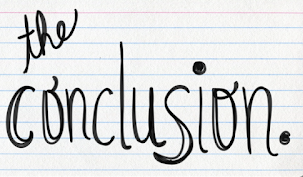
A conclusion is a very important part of your research paper. This is because you, as the author of your paper, are wrapping up everything you have discussed in your paper.
Basically, the length of the conclusion is determined by your paper’s length.
The longer the paper, the longer the conclusion, and the shorter it is, the shorter the conclusion. A conclusion should not be below 3 sentences. It will take a few hours to write all these components of your paper.
Even though this is the case, an effective conclusion should have the following characteristics.
Characteristics of a Good Term Paper Conclusion
- Restatement of the topic of your research
- Restatement of your thesis. This statement should not be identical to what you wrote in the introduction.
- Provide a summary of your main points. Do not provide any new information.
- You can also add up the points to further explain the significance of your points.
- Make a call to action if it is appropriate or significant to your paper.
- Respond to the “so what” question. This requires you to explain the context of your paper and why it matters to the readers.
From this, it is evident that the conclusion is very important in your research paper. You may not include all of the above, but it is important to restate your paper’s topic, thesis, and main points. Check our research paper writing guide to learn more about how to write these parts.
How Long should the Reference Page be?
The reference page length completely depends on the number of sources you have used in your paper. Your paper may be lengthy with few sources, while others can be shorter with more.
A good term paper should have a reference page listing all your information sources. Provided that you list the sources in the right referencing format, like APA and MLA , the length of the reference page is not definitive.
Let your paper be written by a Team
A team avoids plagiarism and has checks and balances to guarantee a quality and ORIGINAL paper
Frequently Asked Questions
How long should a term paper be for high school.
Most teachers in high schools require their students to submit 3 to 5-page research papers. Those are the normal research papers assigned within the semester. However, final research papers like the English 102 papers are between 5 and 7 pages.
What is the optimal graduate paper length?
Even though the topic of the graduate paper determines its length, such papers are considerably longer. This is because they tackle complex topics requiring in-depth explanations, citations, examples, etc. They can be between 7 and 15 pages. They can also exceed the count.
How long should a term paper be for middle school?
The research papers written by students in middle school are considerably shorter than those given to college or graduate school students. The normal papers written within the semester are between 1 and 2 pages, while the final papers are between 2 and 4.
How long should a literature review be for a research paper?
The length of a literature review depends on the purpose and the audience of the term paper. In most of the research papers in college, the literature review should not exceed two pages. For longer papers of more than 10 pages, it can be between 2 and 3 pages.
How to write a term paper fast
To write a research paper fast, begin by selecting a topic. This is followed by researching the topic and working on a thesis. Write the structure of your paper by creating an outline.
Follow the outline and write the paper by beginning with an introduction and ending with a conclusion. Finally, proofread your paper to correct errors. Read our checklist on how to revise your paper to a final copy.
What are the most common types of research paper formats
You must select a specific style when formatting a research or term paper. The most common formats for research papers are MLA, APA, Chicago, and Harvard.
Each format dictates the style of the paper, the spacing, the in-text citation style, and the reference page style. You can get all these done if you get someone to write your homework at a very reasonable cost.
What is the average length of an academic journal article
Most academic journal articles span 20 to 25 pages when they have a one-and-half line spacing. If the academic journals are double-spaced, they can be between 25 and 30 pages. The journal’s word count ranges from 4000 to 7000 words.

With over 10 years in academia and academic assistance, Alicia Smart is the epitome of excellence in the writing industry. She is our managing editor and is in charge of the writing operations at Grade Bees.
Related posts
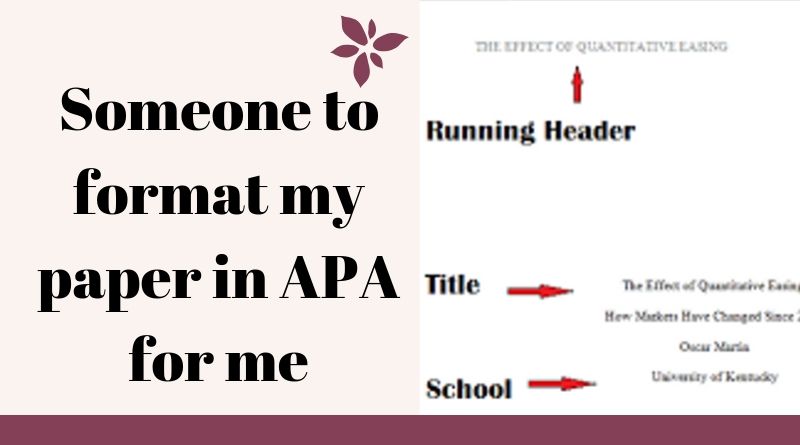
Someone to format my paper in APA for me
How to Write and Cite Sources in APA and MLA for Term Papers

Background Information in an Essay
Background Information in an Essay: How to Write and Example
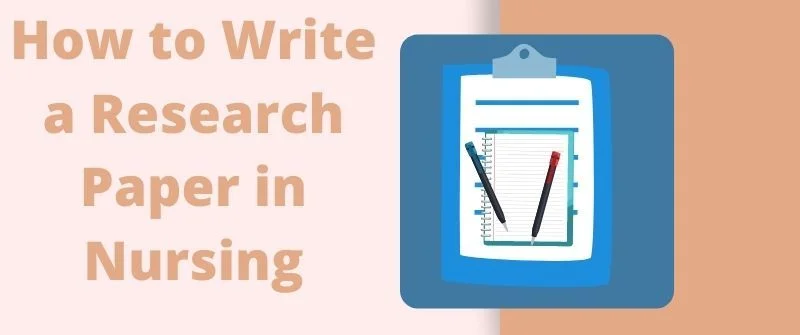
writing Nursing Research Paper
How to Write a Nursing Term Paper or Nursing Research Paper
How Long Should A Research Paper Be?

You must have known what research looks like. It has a particular structure that should be followed at any cost since it is the criteria for writing a research paper . Several questions come into the mind of students such as how to write a research paper, how long should a research paper be, etc.
That’s why we have brought a series of research writing and addressing different questions related to it. This blog aims to answer queries about the duration your research should ideally take, including insights on how to write an 8-page paper effectively. Although it depends upon the guidelines given by your teacher, there is also a standard length of research writing. Let’s dive in and learn everything about the ideal word count of any research.
Table of Contents
What is a Research Paper?
A research paper is an essay that is based on your investigational work you have completed or will complete on just one or many specific topics of a specific discipline. Research or investigation essays are lengthy depending on the scope and extensive nature of the topic.
It’s just an analysis of the topic from your own perspective. A student or a reader present facts and their theories in front of the audience to inform them about the specific subject matter. If you dont know how long is a research paper, here we will take you on a deeper tour to help you understand these essays thoroughly.
What is the Standard Length of a Research Paper?
Discussing the standard length of a paper, it’s important to note that it varies depending on the specific instructions given to each student and the structural requirements related to their chosen finance research topics . It is never a fixed one for all types of papers yet, there are some conditions and possibilities because of which the word count varies.
Research that has a thesis statement only requires 2 to 3 arguments to be proved and will be summed up in 500 to 700 words. After providing the introduction and a little background on the research, you can directly shift to mentioning the arguments and claims so you may prove the statement and complete the research.
Some research requires detailed analysis and interpretation of the findings. This kind of paper has several stages such as introduction, background, thesis statement, objective, research questions, literature review, research methodology, data collection, discussion, findings, conclusion, and bibliography. Such research easily crosses 5000 words because it is important to discuss everything about the topic.
So it entirely depends upon the structure you are following to write the research. It could be as long as just 500 words, or 5000 words, and even more. It all varies therefore you must be prepared for writing a paper no matter how long it should be.
How long is introduction in research paper?
Many students wonder how long should an introduction be in a research paper? The simple answer to this query is as short as possible that justify the requirements and employ all the methods that are necessary for coveying your message.
Typically, a standard length of introductory paragraph is 300-500 words. If your topic needs more than the standard word count than always ask for suggestion from your professor on first priority. We hope now you know how long should an introduction be for a research paper.
Why Considering Length of a Research Paper is Important
Identifying the length of research is important because of so many reasons. You might have never realized the significance of considering how long a paper should be, so here we go with some of the vital reasons.
1. Going Extra May Ruin Your Research
You cannot write more than is required in research. If you are doing so then you are automatically ignoring the quality measures of writing a paper. If you are writing more than words than is required then there are chances you are going to submit a poor quality research work.
2. Sticking to the Guidelines is Important
When your guidelines have mentioned 1000 words maximum and you are submitting research of 2000 words, you already know what wrong you have done. If you are not sticking to the guidelines it will result in deduction of marks, fall in grades, and repetition of the class course.
3. Having a Balance is Good
It is necessary to keep a balance between the word count of all the headings. Without this much-needed balance, you might end up submitting a poor paper that has a longer introduction, and a shorter explanation of the findings. That’s why attaining a balance is important in your research word count.
4. Delivering Quality Research is the Criteria
When you are delivering quality content, you will be appreciated no matter what. If you consider the length of your research, you are one step forward in delivering quality research work to your teacher.
How Long Should a Research Paper Be?
This question is valid and one of the frequently asked questions by the students of high school and college. It is also important to know before you start working on your paper. Don’t forget to read the instructions provided by your teacher, however, we have more suggestions for you regarding the length of the research.
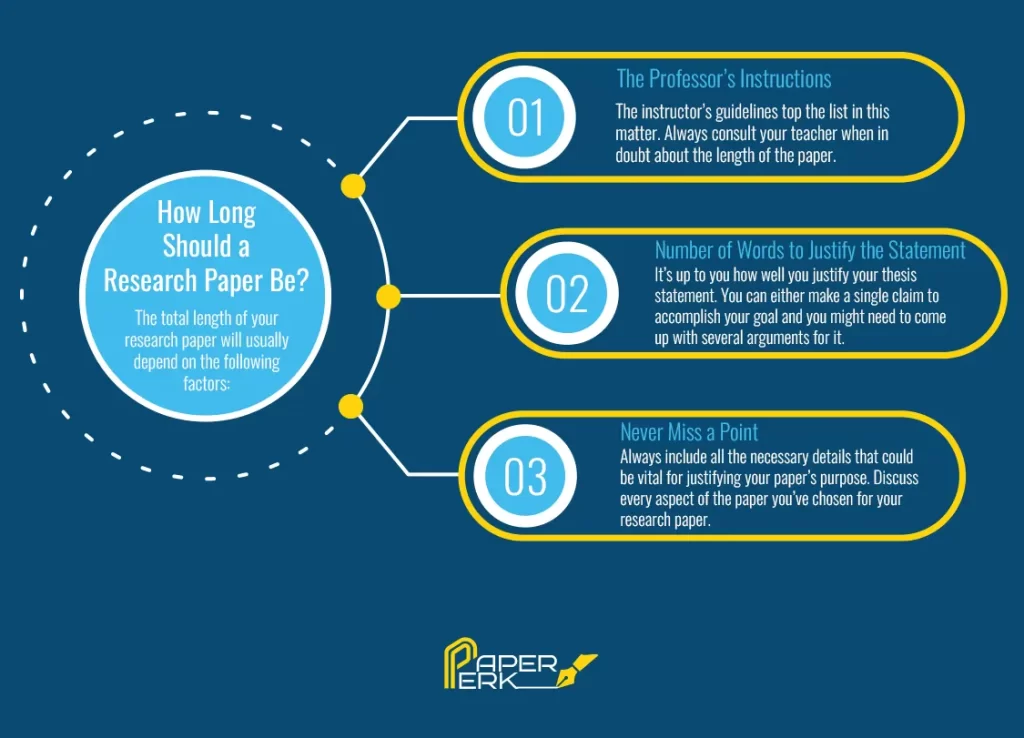
1. It All Depends On Your Teacher First
Your teacher indeed decides what should be the ideal length of your research. They have given some guidelines to you and you need to follow them. The teachers always know the best and they will suggest to you how long your essay should be.
Some teachers have kept a certain word limit for the paper while others provide you complete freedom to write as long as you want. It is necessary to figure out what’s best for your research. In high schools, a standard length of any research is a maximum of 7 to 8 pages while the minimum should be 5 pages.
2. Check How Much Length is Required to Justify Your Statement
Sometimes it is based on the thesis for research paper . From the part of the abstract to the conclusion, there must be a balance between the word count of every heading. It is your responsibility as a writer to track the word count when you are trying to justify your thesis by giving several arguments and claims.
If you have decided how many arguments it will take to prove your thesis, then you have already finalized the length of your research. All you have to do is prepare everything in advance and see if you are proving your point within 5 or 8 pages.
3. It Shouldn’t Miss Any Point
A researcher must be discussing all the standard details that could justify the purpose of writing the paper. It must have all the headings properly discussed. Since all the points must be 100% clear in the research, deciding on a word limit in the very beginning could be a little hard.
But it is not impossible to identify by making an outline and checking how many pages will be covered in writing about a certain topic. All you have to do is take care that no point is missing in the research. Cutting the research short and trying to discuss facts to the exact point won’t help unless you are entirely explaining every aspect as required.
How Long a Research Paper Should be in Words?
You have learned something about the ideal length of research. When it comes to the word count, the criterion is a bit different. For example, if you need a Ph.D. research paper help , you must know the word count, typically between 70,000 to 80,000 words. As you suggest a specific word count for every heading, it is easier to guess how many words are required to summarize every title.
1. Assign Word Count To Each Heading
It is easier to assign a specific word count to every heading and then see what’s the total word length of the paper. For instance, you have to decide how many words will be used to cover your introduction section. A literature review is a second longer part after the discussion in every research so it is necessary to make an outline in advance and see what is the ideal length of every heading.
By giving a suggested word count to each heading you will make a clear pathway to follow during the complete research. It will be automatically easier for you to see how many words will be written to explain everything in your research thoroughly.
There are several sections in research that require certain word counts. Let’s see what word count is usually subjected to every heading.
An abstract for a research paper is the first main part that summarizes the research from the beginning to the conclusion. It contains the thesis, methodology, findings, and conclusion. So to explain the complete research in a few sentences, roughly 100 to 200 words will be required. So you may keep in mind the word count for an abstract is a maximum of 200 words.
● Introduction
An introduction is also a major part of the research and it is easily covered within 300 words maximum. Nothing else is required to explain terminologies or theories in this section. However, there are many opinion on this topic and each have different answers. That’s the prime reason students spend day and night on google looking for answers on their questions such as how long should introduction be for research paper. In short, 300 to 500 words are more than enough to state your thoughts in an into section and persuade your readers.
● Literature Review
The literature review is the second-longest section in any research. It contains a reference to the past research done in a similar field by other researchers. Every research must have 5 to 8 or even more past papers discussed in it. Therefore the ideal word count for this section is 500 to 1000 words.
● Methodology
The methodology section also has subcategories in which you have to explain the method of research, data collection, population, research implications, research Instrument, etc. It will take around 300 to 400 words and 100 words extra if you are discussing a theoretical framework too.
● Discussion and Interpretation
This is the longest part of any research since you have to explain all the findings and tell your readers how successfully you have managed to prove your thesis. This part is as long as 500 to 1000 or even 1500 words depending upon the results and the explanation required.
● Conclusion
A conclusion is a not so lengthy part of the paper. It is usually done within only 100 or 150 words maximum. It is that simple and thus it doesn’t need so many words to finish the argument and put a full stop.
2. Form a Paper Outline
Forming a paper outline in advance will also help you in understanding how many words you may need to cover every heading. This is one of the best ideas for assigning a particular word count to every heading of the paper.
As you’ll create a paper outline, you will get an instant idea of how many words you have to write in total to complete the research. Following this strategy will surely help you won’t be puzzled later during the writing process.
3. Ask Your Instructor
It is always a good idea to ask your teacher or instructor before following any word count technique. They have assigned you a paper so they can provide you with a better guideline to write your paper. It is the easiest method of identifying the word count of your research as it’s something recommended by an expert. Your job will become much easier and simpler by just seeking advice from your teacher.
How Long a Research Paper Should be for Middle School?
A middle school student is just starting with the research work and they are at the initial stages of learning how to conduct research. To understand how long a paper should be for middle school, you need to do some work.
1. Seek Expert Help
It is always better to seek help from an expert to decide the word limit of your essay when you’re a high school student. It could be your teacher or any senior student who will help you and guide how many pages you should write for your research. It is suggested to write 4 to 5 pages when you are a middle school student in writing a paper.
2. Do Research
It is always important to do some research and find out what’s best for your paper. Google is always open to helping students in learning new things without any limit. You can open the Google search engine, write down your query in the search bar and click on it.
Next, you will have everything to read and understand how a paper for middle school will work. By doing so you will automatically get an in-depth idea of crafting research for the initial level project.
After analyzing everything you can easily guess what should be the length of any research written by a middle school student. In pages, it is suggested to write 3 to 5 pages, but in words, it is recommended to write 400 to 500 words only. You can also hire a professional paper writing service to aid you in the process.
As it’s a new thing for the students to perform, they might get nervous easily. That’s why starting slow and taking baby steps towards learning research writing will help a lot.
How long Should a Research Paper be for High School?
High school is a different stage than middle school. You are mature, better at studies, and even more creative than before. This stage comes with its challenges and one of them is writing the research. If you are a new high school student we bet you don’t know much about paper writing at this level.
When a high school student writes a research paper, it’s usually written within 500 to 1000 words. It could be more than this word count or just 5 to 6 pages. The teacher’s instructions do matter a lot in this aspect and without them, you can’t understand the criteria of research writing. It takes a lot of research, consultation, and creativity to write a paper that stands out. The competition is even tougher in high schools so you know how tough it can get to write a research paper fast .
Your research will decide if you are going to pass the school or not. Many students stay stuck in a class because they are incapable of submitting a brilliant research paper. Most of the time it’s because they don’t know the standard guidelines for writing a paper.
They usually end up ignoring the pattern, writing incorrect information, or exceeding or limiting the length assigned for the research. So it’s better to keep in mind what is the better approach for research writing and how a high school student can learn to write it.
How Long Should a Research Paper be for College?
Have you ever thought about how long your research should be when you have finally reached college? It is the final stage of your education and writing research in this phase will require a lot of preparation. In college, you have to write the longest research papers because it is the standard of a paper written by a college student.
So how exactly long should research be for college? It starts with roughly 3000 words and goes up to 15000 words. 15000 words is a lot but students who are working on their thesis need a lot of details to justify and complete their research. Without doing this they are not getting passed at any cost so now you know why it is so important.
Different sections of the paper require their particular word count. It is sometimes difficult to identify but your teachers will always be there to guide you. Sometimes students are given the entire freedom to keep their essay length on their own. It helps them understand how easily they can prove their thesis either in a few or a lot of pages.
For newcomers in college unsure about the ideal length for research papers, utilizing Google is a great option to delve deeper into the nuances of research writing. It’s particularly helpful in exploring various guidelines related to history research topics . A lot of content is already published on the web which teaches the students almost everything they need.
We hope you know how long is a research paper, no matter if you are writing one for your middle school, high school, or college. All of them have different requirements and basic criteria that should be followed. We also hope this blog has helped you learn everything about deciding the word count or overall length of your research.
Our comment section is always open for your discussion and feedback. If you want to get in touch with us or discuss the topic more, just leave a comment in the given box. We would love to hear from our readers and see what they have in their minds after reading our blog.
What is the average length of a research paper?
The average length of a research paper is usually 5 to 7 pages. It can also be more or less than this but it is the standard length of research
Can I write a research paper in 2 days?
How long does it take to write a 7-page research paper.
A 7-page research paper is quite lengthy and it will require about 3 to 4 days for completion. It involves research, outlining, writing, and proofreading so 4 days are suitable to write a 7-page research paper. Taking 5 days or a week is also justified in writing 7-page research. Most of the teachers give 2 to 3 weeks to complete such a project.
How long is too long for a research paper?
A college research paper exceeding the 5000-word limit is too long if the guidelines have suggested less than 5000 words to write. There is no particular length as such because it is all based on the requirements of research writing.
How many paragraphs should a research paper have?
A research paper is usually not written by counting the paragraphs. It is written headings or pages-wise. Though for a middle school paper it must have 10 to 12 paragraphs, 15 to 18 paragraphs for a high school paper, and more than 20 paragraphs for a college research project.
Order Original Papers & Essays
Your First Custom Paper Sample is on Us!
Timely Deliveries
No Plagiarism & AI
100% Refund
Try Our Free Paper Writing Service
Related blogs.

Connections with Writers and support
Privacy and Confidentiality Guarantee
Average Quality Score
Have a language expert improve your writing
Run a free plagiarism check in 10 minutes, generate accurate citations for free.
- Knowledge Base
- How long is an essay? Guidelines for different types of essay
How Long is an Essay? Guidelines for Different Types of Essay
Published on January 28, 2019 by Shona McCombes . Revised on July 23, 2023.
The length of an academic essay varies depending on your level and subject of study, departmental guidelines, and specific course requirements. In general, an essay is a shorter piece of writing than a research paper or thesis .
In most cases, your assignment will include clear guidelines on the number of words or pages you are expected to write. Often this will be a range rather than an exact number (for example, 2500–3000 words, or 10–12 pages). If you’re not sure, always check with your instructor.
In this article you’ll find some general guidelines for the length of different types of essay. But keep in mind that quality is more important than quantity – focus on making a strong argument or analysis, not on hitting a specific word count.
Instantly correct all language mistakes in your text
Upload your document to correct all your mistakes in minutes

Table of contents
Essay length guidelines, how long is each part of an essay, using length as a guide to topic and complexity, can i go under the suggested length, can i go over the suggested length, other interesting articles.
| Type of essay | Average word count range | Essay content |
|---|---|---|
| High school essay | 300–1000 words | In high school you are often asked to write a 5-paragraph essay, composed of an introduction, three body paragraphs, and a conclusion. |
| College admission essay | 200–650 words | College applications require a short personal essay to express your interests and motivations. This generally has a strict word limit. |
| Undergraduate college essay | 1500–5000 words | The length and content of essay assignments in college varies depending on the institution, department, course level, and syllabus. |
| Graduate school admission essay | 500–1000 words | Graduate school applications usually require a longer and/or detailing your academic achievements and motivations. |
| Graduate school essay | 2500–6000 words | Graduate-level assignments vary by institution and discipline, but are likely to include longer essays or research papers. |
Here's why students love Scribbr's proofreading services
Discover proofreading & editing
In an academic essay, the main body should always take up the most space. This is where you make your arguments, give your evidence, and develop your ideas.
The introduction should be proportional to the essay’s length. In an essay under 3000 words, the introduction is usually just one paragraph. In longer and more complex essays, you might need to lay out the background and introduce your argument over two or three paragraphs.
The conclusion of an essay is often a single paragraph, even in longer essays. It doesn’t have to summarize every step of your essay, but should tie together your main points in a concise, convincing way.
The suggested word count doesn’t only tell you how long your essay should be – it also helps you work out how much information and complexity you can fit into the given space. This should guide the development of your thesis statement , which identifies the main topic of your essay and sets the boundaries of your overall argument.
A short essay will need a focused, specific topic and a clear, straightforward line of argument. A longer essay should still be focused, but it might call for a broader approach to the topic or a more complex, ambitious argument.
As you make an outline of your essay , make sure you have a clear idea of how much evidence, detail and argumentation will be needed to support your thesis. If you find that you don’t have enough ideas to fill out the word count, or that you need more space to make a convincing case, then consider revising your thesis to be more general or more specific.
The length of the essay also influences how much time you will need to spend on editing and proofreading .
You should always aim to meet the minimum length given in your assignment. If you are struggling to reach the word count:
- Add more evidence and examples to each paragraph to clarify or strengthen your points.
- Make sure you have fully explained or analyzed each example, and try to develop your points in more detail.
- Address a different aspect of your topic in a new paragraph. This might involve revising your thesis statement to make a more ambitious argument.
- Don’t use filler. Adding unnecessary words or complicated sentences will make your essay weaker and your argument less clear.
- Don’t fixate on an exact number. Your marker probably won’t care about 50 or 100 words – it’s more important that your argument is convincing and adequately developed for an essay of the suggested length.
In some cases, you are allowed to exceed the upper word limit by 10% – so for an assignment of 2500–3000 words, you could write an absolute maximum of 3300 words. However, the rules depend on your course and institution, so always check with your instructor if you’re unsure.
Only exceed the word count if it’s really necessary to complete your argument. Longer essays take longer to grade, so avoid annoying your marker with extra work! If you are struggling to edit down:
- Check that every paragraph is relevant to your argument, and cut out irrelevant or out-of-place information.
- Make sure each paragraph focuses on one point and doesn’t meander.
- Cut out filler words and make sure each sentence is clear, concise, and related to the paragraph’s point.
- Don’t cut anything that is necessary to the logic of your argument. If you remove a paragraph, make sure to revise your transitions and fit all your points together.
- Don’t sacrifice the introduction or conclusion . These paragraphs are crucial to an effective essay –make sure you leave enough space to thoroughly introduce your topic and decisively wrap up your argument.
If you want to know more about AI tools , college essays , or fallacies make sure to check out some of our other articles with explanations and examples or go directly to our tools!
- Ad hominem fallacy
- Post hoc fallacy
- Appeal to authority fallacy
- False cause fallacy
- Sunk cost fallacy
College essays
- Choosing Essay Topic
- Write a College Essay
- Write a Diversity Essay
- College Essay Format & Structure
- Comparing and Contrasting in an Essay
(AI) Tools
- Grammar Checker
- Paraphrasing Tool
- Text Summarizer
- AI Detector
- Plagiarism Checker
- Citation Generator
Cite this Scribbr article
If you want to cite this source, you can copy and paste the citation or click the “Cite this Scribbr article” button to automatically add the citation to our free Citation Generator.
McCombes, S. (2023, July 23). How Long is an Essay? Guidelines for Different Types of Essay. Scribbr. Retrieved September 3, 2024, from https://www.scribbr.com/academic-essay/length/
Is this article helpful?
Shona McCombes
Other students also liked, how to write an essay introduction | 4 steps & examples, how to conclude an essay | interactive example, how to write a statement of purpose | example, get unlimited documents corrected.
✔ Free APA citation check included ✔ Unlimited document corrections ✔ Specialized in correcting academic texts
How to Make a College Paper Longer
101dalmatians / Getty Images
- Before You Arrive
- Health, Safety, and Nutrition
- Living On Campus
- Outside The Classroom
- Graduation & Beyond
- Homework Help
- Private School
- College Admissions
- Graduate School
- Business School
- Distance Learning
- M.Ed., Higher Education Administration, Harvard University
- B.A., English and Comparative Literary Studies, Occidental College
Need to make a paper longer but out of ideas? Forget fudging the margins and font or even the legendary "period trick." These 6 tips will make your paper longer—and better!
Avoid the Old, Obvious Tricks
First and foremost, know that your professor most likely knows about all of the "easy" tricks and can spot 'em! Changing the font, changing the margins, doing the "period trick," and tons of other sneaky ways to make your paper longer have all been done before and then some. Since you need to make your paper longer , not worse , skip the easy stuff and focus on the content.
Cite a Few Sources
Add additional quotations to support your examples. If your paper is good, you'll have examples to support your thesis . To make your paper even better (and longer), make sure you have at least one quotation from the text—if not more—to support your examples. (And be careful about citing your quotations accurately, too.)
Add Some Examples to Your Paper
Add an additional example to each paragraph/argument/idea. If you can't add more quotations , add more examples to support your position. Think about more ways to make your point by showing —not just telling—the reader.
Check Your Paragraph Format
Make sure each paragraph has a topic sentence , supporting evidence , and a concluding/transition sentence. Of course, each paragraph should have more than just these three sentences, but you might be surprised at how easily each can be left off—and how much longer your paper can become if you go back through and insert missing items where needed.
See If You Can Prove Yourself Wrong
Think about the arguments against your thesis—and then make sure you've addressed those points. Sure, you may have good arguments for your position. But what would someone holding the opposite position say? And what would you say in response? Making sure those responses are already included in your paper is a great way to make sure you've covered all the bases... and a great way to add some length if your paper is a little shorter than you'd like.
Make Sure Your Paper Structure Is Solid
Confirm and reconfirm that you have a strong introduction , thesis statement , and conclusion . Although you may be focused on the body of your paper and the evidence supporting your position, having a strong intro, thesis, and conclusion are important, too. Making sure your paper starts with a bang (good intro), has a solid foundation to stand on (strong thesis), and leaves the reader convinced (stellar conclusion) is a great way to make sure your paper is all-around better—and longer!
- How to Keep up With College Reading
- What to Do When You Feel Overwhelmed in College
- How to Ask for an Extension on a College Paper
- Why Do College Books Cost So Much?
- Steps for Strong Time Management for College Students
- 50 Differences Between College and High School
- What to Do When You're Behind in Your College Classes
- What to Do If You're Charged With College Plagiarism
- Learn Your Options If You're Kicked out of College
- How are College Academics Different from High School?
- Reasons to Go to Class
- How to Fail a College Class
- What to Do If You Have a Bad College Professor
- How to Stay Calm During Finals Week
- Should I Drop a Class?
- How to Stay Motivated at the End of the Semester
- Skip to Guides Search
- Skip to breadcrumb
- Skip to main content
- Skip to footer
- Skip to chat link
- Report accessibility issues and get help
- Go to Penn Libraries Home
- Go to Franklin catalog
Critical Writing Program: AI in Education Fall 2024: Researching the White Paper
- Getting started
- News and Opinion Sites
- Academic Sources
- Grey Literature
- Substantive News Sources
- What to Do When You Are Stuck
- Understanding a citation
- Examples of Quotation
- Examples of Paraphrase
- Chicago Manual of Style: Citing Images
- Researching the Op-Ed
- Researching Prospective Employers
- Resume Resources
- Cover Letter Resources
Research the White Paper
Researching the white paper:.
The process of researching and composing a white paper shares some similarities with the kind of research and writing one does for a high school or college research paper. What’s important for writers of white papers to grasp, however, is how much this genre differs from a research paper. First, the author of a white paper already recognizes that there is a problem to be solved, a decision to be made, and the job of the author is to provide readers with substantive information to help them make some kind of decision--which may include a decision to do more research because major gaps remain.
Thus, a white paper author would not “brainstorm” a topic. Instead, the white paper author would get busy figuring out how the problem is defined by those who are experiencing it as a problem. Typically that research begins in popular culture--social media, surveys, interviews, newspapers. Once the author has a handle on how the problem is being defined and experienced, its history and its impact, what people in the trenches believe might be the best or worst ways of addressing it, the author then will turn to academic scholarship as well as “grey” literature (more about that later). Unlike a school research paper, the author does not set out to argue for or against a particular position, and then devote the majority of effort to finding sources to support the selected position. Instead, the author sets out in good faith to do as much fact-finding as possible, and thus research is likely to present multiple, conflicting, and overlapping perspectives. When people research out of a genuine desire to understand and solve a problem, they listen to every source that may offer helpful information. They will thus have to do much more analysis, synthesis, and sorting of that information, which will often not fall neatly into a “pro” or “con” camp: Solution A may, for example, solve one part of the problem but exacerbate another part of the problem. Solution C may sound like what everyone wants, but what if it’s built on a set of data that have been criticized by another reliable source? And so it goes.
For example, if you are trying to write a white paper on the opioid crisis, you may focus on the value of providing free, sterilized needles--which do indeed reduce disease, and also provide an opportunity for the health care provider distributing them to offer addiction treatment to the user. However, the free needles are sometimes discarded on the ground, posing a danger to others; or they may be shared; or they may encourage more drug usage. All of those things can be true at once; a reader will want to know about all of these considerations in order to make an informed decision. That is the challenging job of the white paper author. The research you do for your white paper will require that you identify a specific problem, seek popular culture sources to help define the problem, its history, its significance and impact for people affected by it. You will then delve into academic and grey literature to learn about the way scholars and others with professional expertise answer these same questions. In this way, you will create creating a layered, complex portrait that provides readers with a substantive exploration useful for deliberating and decision-making. You will also likely need to find or create images, including tables, figures, illustrations or photographs, and you will document all of your sources.
Librarian for Classical Studies, Ancient History

Connect to a Librarian Live Chat or "Ask a Question"
- Librarians staff live chat from 9-5 Monday through Friday . You can also text to chat: 215-543-7674
- You can submit a question 24 hours a day and we aim to respond within 24 hours
- You can click the "Schedule Appointment" button above in librarian's profile box (to the left), to schedule a consultation with her in person or by video conference.
- You can also make an appointment with a Librarian by subject specialization .
- Connect by email with a subject librarian
Find more easy contacts at our Quick Start Guide
- Next: Getting started >>
- Last Updated: Sep 4, 2024 2:07 PM
- URL: https://guides.library.upenn.edu/c.php?g=1422088

IMAGES
VIDEO
COMMENTS
1- The median length of a research paper is 4,133 words (equivalent to 166 sentences or 34 paragraphs), excluding the abstract and references, with 90% of papers being between 2,023 and 8,284 words. 2- A typical article is divided in the following way: Introduction section: 14.6% of the total word count. Methods section: 29.7% of the total word ...
Simone A. Fried, TF Spring 2021. The Structure of an Academic Paper. www.communicate.gse.harvard.edu. Academic papers are like hourglasses. The paper opens at its widest point; the introduction makes broad connections to the reader's interests, hoping they will be persuaded to follow along, then gradually narrows to a tight, focused, thesis ...
When writing a research paper, the length is usually determined by the assignment requirements or the target journal's guidelines. However, there are some general rules of thumb that can be helpful. For example, a typical research paper for a college-level course is usually around 10-15 pages, while a graduate-level research paper may be 20-30 ...
The main guidelines for formatting a paper in APA Style are as follows: Use a standard font like 12 pt Times New Roman or 11 pt Arial. Set 1 inch page margins. Apply double line spacing. If submitting for publication, insert a APA running head on every page. Indent every new paragraph ½ inch.
Develop a thesis statement. Create a research paper outline. Write a first draft of the research paper. Write the introduction. Write a compelling body of text. Write the conclusion. The second draft. The revision process. Research paper checklist.
The length of a research paper depends on the topic or assignment. Typically, research papers run around 4,000-6,000 words, but it's common to see short papers around 2,000 words or long papers over 10,000 words. ... Many college courses use research papers to test a student's knowledge of a particular topic or their research skills in ...
Personal statements are generally 500-650 words. For example, the Common Application, which can be used to apply to more than 800 colleges, requires an essay ranging from 250-650 words. Similarly, the Coalition Application, which has 150 member schools, features an essay with a recommended length of 500-650 words.
Step 1: Find a topic and review the literature. As we mentioned earlier, in a research paper, you, as the researcher, will try to answer a question.More specifically, that's called a research question, and it sets the direction of your entire paper. What's important to understand though is that you'll need to answer that research question with the help of high-quality sources - for ...
Revised on June 1, 2023. Most college application portals specify a word count range for your essay, and you should stay within 10% of the upper limit. If no word count is specified, we advise keeping your essay between 400 and 600 words. You should aim to stay under the specified limit to show you can follow directions and write concisely.
Getting your research paper done in a timely, efficient manner usually takes about two weeks, depending on the length of the essay. Step 3: Choose a Research Paper Topic. Your professor may give you specific research paper topics to write about. Or, your research paper may need to answer a certain question.
The issue of the length of a research paper is a difficult one to answer since it is based on a variety of aspects. The primary elements to determine the length of your research paper are: ... The literature review in most college research papers should not be longer than two pages. It can be between 2 and 3 pages for longer papers of more than ...
Research papers get progressively longer through middle school, high school, and college. Here are some average word counts: Middle School: 500-1000. High School: 1500-2000. College (freshman/sophomore): 2000-3000. College (junior/senior): 3000-5000. Graduate School: 5000-7000+. These numbers serve as a ballpark average, but lengths can still ...
Set the top, bottom, and side margins of your paper at 1 inch. Use double-spaced text throughout your paper. Use a standard font, such as Times New Roman or Arial, in a legible size (10- to 12-point). Use continuous pagination throughout the paper, including the title page and the references section.
By refining your focus, you can produce a thoughtful and engaging paper that effectively communicates your ideas to your readers. 5. Write a thesis statement. A thesis statement is a one-to-two-sentence summary of your research paper's main argument or direction.
High school papers may range from 5-20 pages, college-level papers from 10-30 pages, and graduate theses can be significantly longer, even reaching 100+ pages for Ph.D. dissertations. The spacing, citation style (APA, MLA, Chicago), and number of words also affect the paper's length. Components of a Research Paper.
In the simplest terms, your college essay should be pretty close to, but not exceeding, the word limit in length. Think within 50 words as the lower bound, with the word limit as the upper bound. So for a 500-word limit essay, try to get somewhere between 450-500 words. If they give you a range, stay within that range.
Since most of the research papers given to undergraduate college students are not lengthy, the introduction should not exceed a page. Recommended length of Individual paragraphs in research paper Even though no definitive rules determine the length of individual paragraphs in a paper, the most recommended length is between 90 words and 130 words.
For newcomers in college unsure about the ideal length for research papers, utilizing Google is a great option to delve deeper into the nuances of research writing. ... A college research paper exceeding the 5000-word limit is too long if the guidelines have suggested less than 5000 words to write. There is no particular length as such because ...
In high school and 100 level college classes, you will probably be writing 5-10 page research papers, and as you progress to upper level college classes, you will begin to write 10-20 page papers ...
Essay length guidelines. Type of essay. Average word count range. Essay content. High school essay. 300-1000 words. In high school you are often asked to write a 5-paragraph essay, composed of an introduction, three body paragraphs, and a conclusion. College admission essay. 200-650 words.
Cite a Few Sources. Add additional quotations to support your examples. If your paper is good, you'll have examples to support your thesis. To make your paper even better (and longer), make sure you have at least one quotation from the text—if not more—to support your examples. (And be careful about citing your quotations accurately, too.)
While many high school and college research papers are typically five paragraphs in length, longer papers are often variations on this format. Familiarity with the five-paragraph essay should ease the transition to longer papers. How to write a research paper outline After identifying a topic, determine the type of research paper you'll be writing.
2 Make a list of all the topics, subtopics, and points you want to cover. Go through your research and note each topic, subtopic, and supporting point. Be sure to keep related information together. Remember that everything you discuss in your paper should relate to your thesis, so omit anything that seems tangential.
Researching the White Paper: The process of researching and composing a white paper shares some similarities with the kind of research and writing one does for a high school or college research paper. What's important for writers of white papers to grasp, however, is how much this genre differs from a research paper.
2.1. The definition of PjBL Class Model. The PjBL (project-based learning) Class Model was developed by the famous Buck Institute for Education (BIE), providing an opportunity for in-depth investigation through the exploration of the real world (Aubrey, Citation 2022; Yang et al., Citation 2021).The PjBL Class Model as a comprehensive method of learning and teaching in the classroom, aiming to ...